How to Start and Keep a Gardening Journal for Your Garden Success
Do you keep a gardening journal to track your garden’s progress? Keeping a detailed record of your gardening activities makes it easy to note successes and failures and plan for future adjustments in the garden.
Have you ever had that moment in the garden where you thought, “Didn’t I plant something amazing here last year?” or “When exactly did that plant get hit by that weird fungus?” This is where a garden journal becomes your secret weapon.
Remembering what happened the previous year is the most important thing I do as a gardener to grow a thriving garden. If I hadn’t made a journal entry every time there was an unexpected weather event, or I grew a new plant, I would never have remembered the details when the next season came around.
In this post, I share the benefits of garden journaling and why it’s such an essential tool. I also provide my best garden journal ideas to help you start and keep a garden diary to develop a more organized and successful garden.
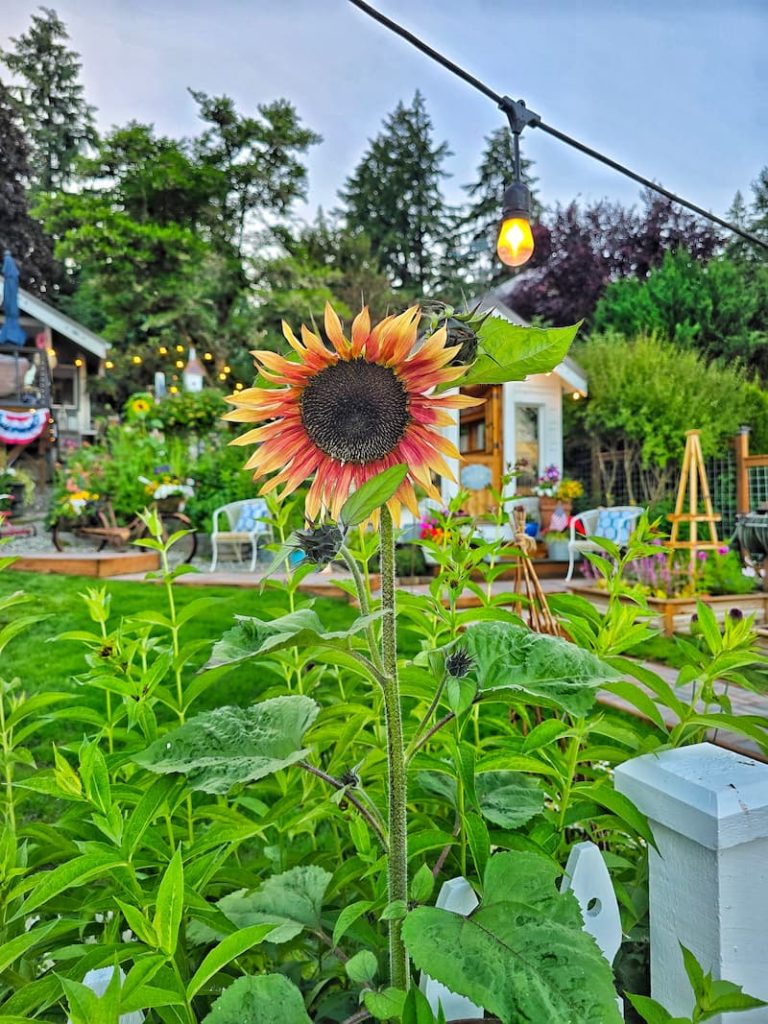
As an Amazon affiliate, I earn a commission from qualifying purchases at no additional cost to you. My blog also features other affiliate links for your convenience. Click here to read my privacy policy.
What is Garden Journaling?
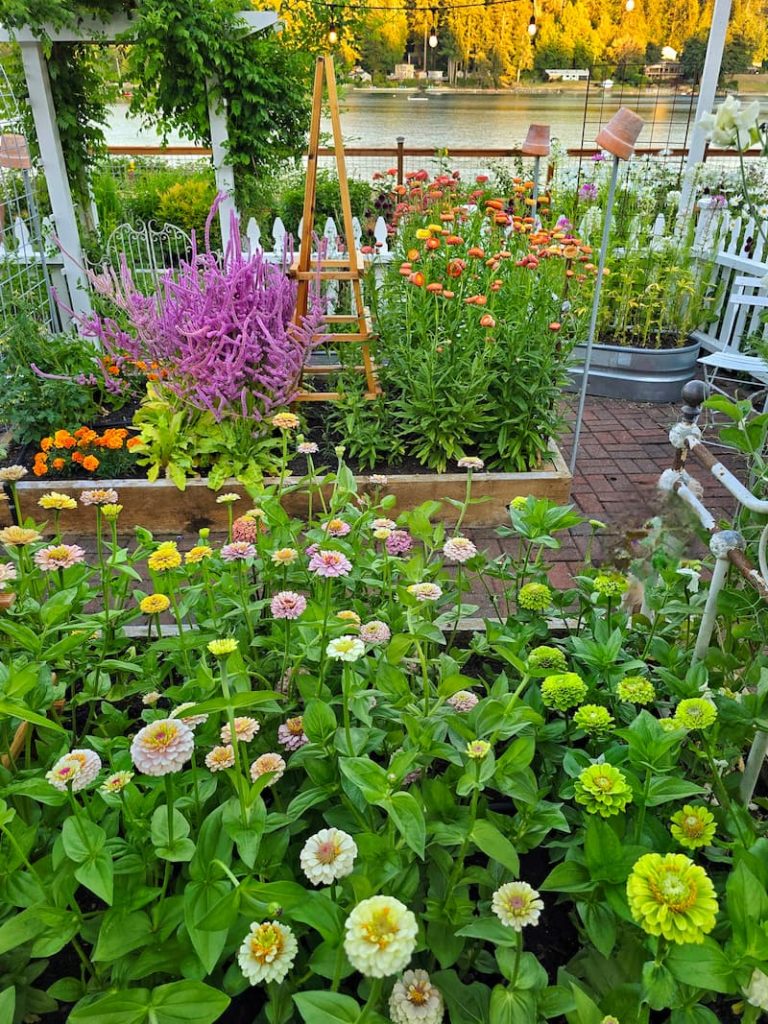
In a dedicated notebook, planner, or digital app, garden journaling documents your gardening experiences, observations, and activities. It encourages you to observe your plants more closely and quickly notice changes.
This vital tool helps to track your garden’s progress, plan future activities, and learn from your experiences to become a more successful gardener.
You can include a wide range of information in your garden journal, such as planting dates, weather conditions, pest sightings, and notes on the health and growth of your plants. Use a garden planner to create to-do lists and sketch garden layouts.
Why Keep a Garden Journal?
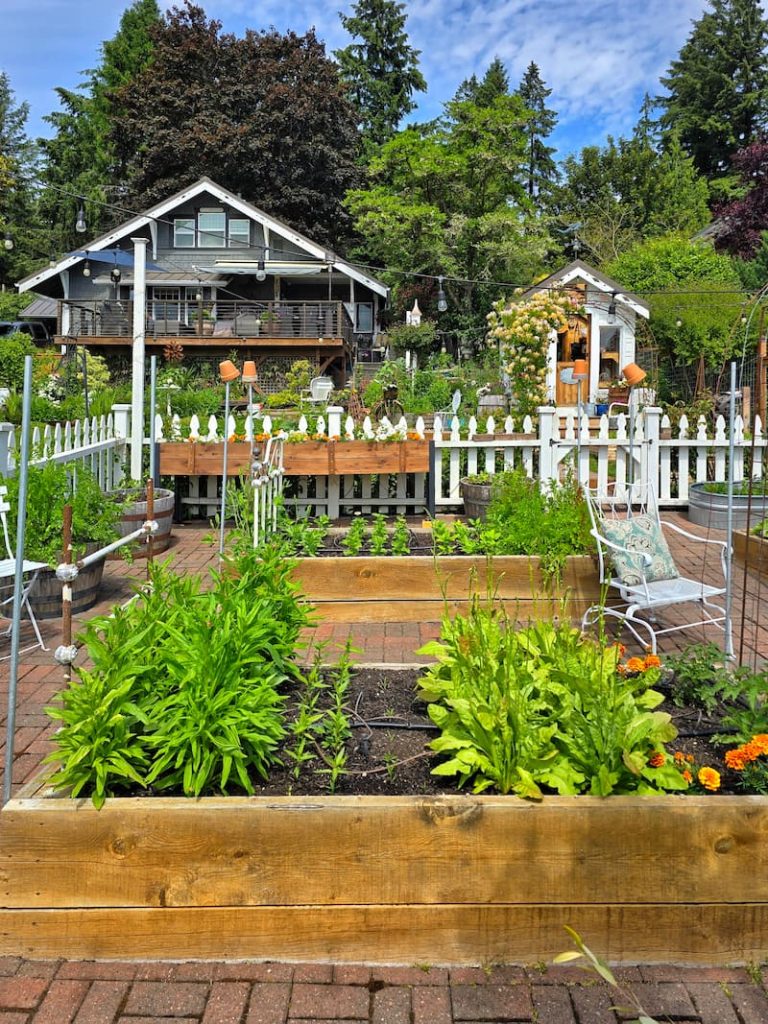
Garden journaling is a helpful tool that can enhance your gardening experience and success. Here are some key advantages.
Tracking Progress
Record your plants’ growth and development over time with a garden journal. You can note planting dates, germination periods, blooming times, and harvest dates. This is a great way to understand your plants’ lifecycle and make informed decisions for next year’s garden.
Identifying Patterns
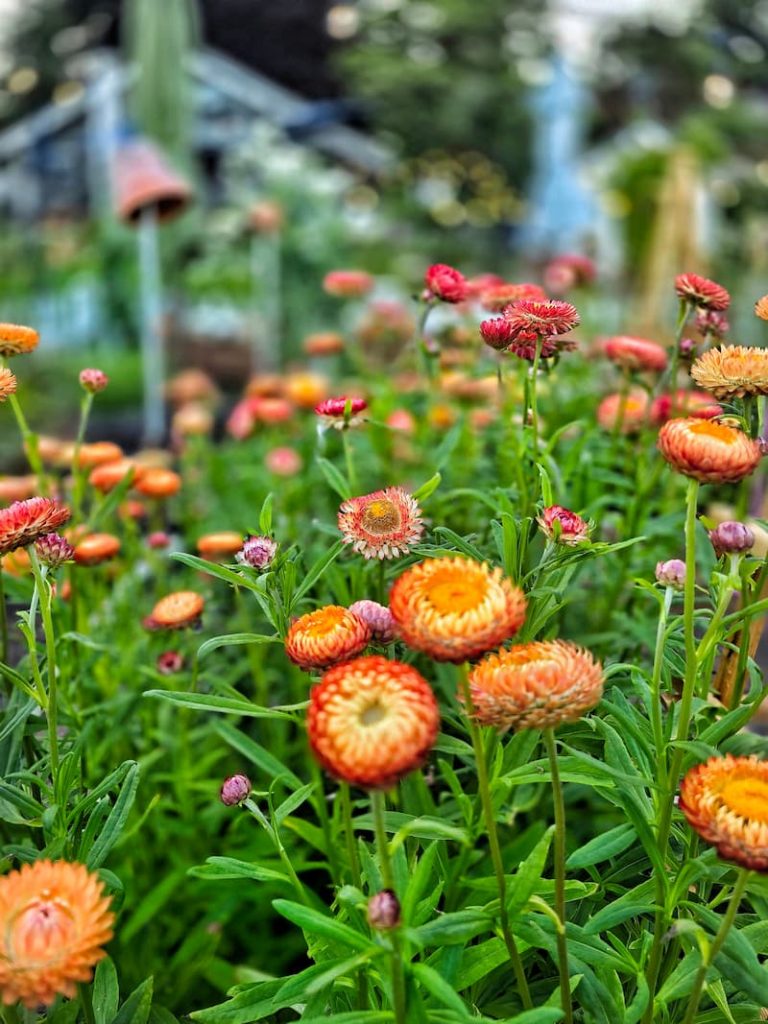
Documenting weather conditions, pest activity, and other environmental factors can help you identify patterns that affect your garden for future reference. This information can help you anticipate and mitigate potential issues, leading to healthier plants.
Grow a Better Garden
Garden journaling is an invaluable practice that supports every aspect of your gardening journey. By starting and keeping a garden journal, you can grow a healthier, more productive, and more beautiful garden year after year.
Learn from Your Mistakes

Document any challenges, setbacks, or mistakes and analyze what went wrong. Whether it’s a plant that failed to thrive, an ineffective pest control method, or a poor planting decision, recording these experiences helps you understand the underlying causes.
Reflecting on these mistakes can help you develop strategies to avoid repeating them in the future, turning each setback into a learning opportunity.
Save Money

Garden journaling helps you optimize resources, reduce waste, and make informed decisions. By keeping detailed records of seeds and plants, you can avoid overpurchasing and duplicating your inventory.
Documenting each plant’s care routines and conditions helps optimize plant health, reducing the need for costly replacements and treatments. Improved soil management through careful documentation can minimize the need for costly fertilizers and soil amendments.
A well-maintained garden journal also helps you plan and organize your gardening activities, allowing you to take advantage of sales, discounts, and bulk purchasing opportunities.
Improve Problem-Solving
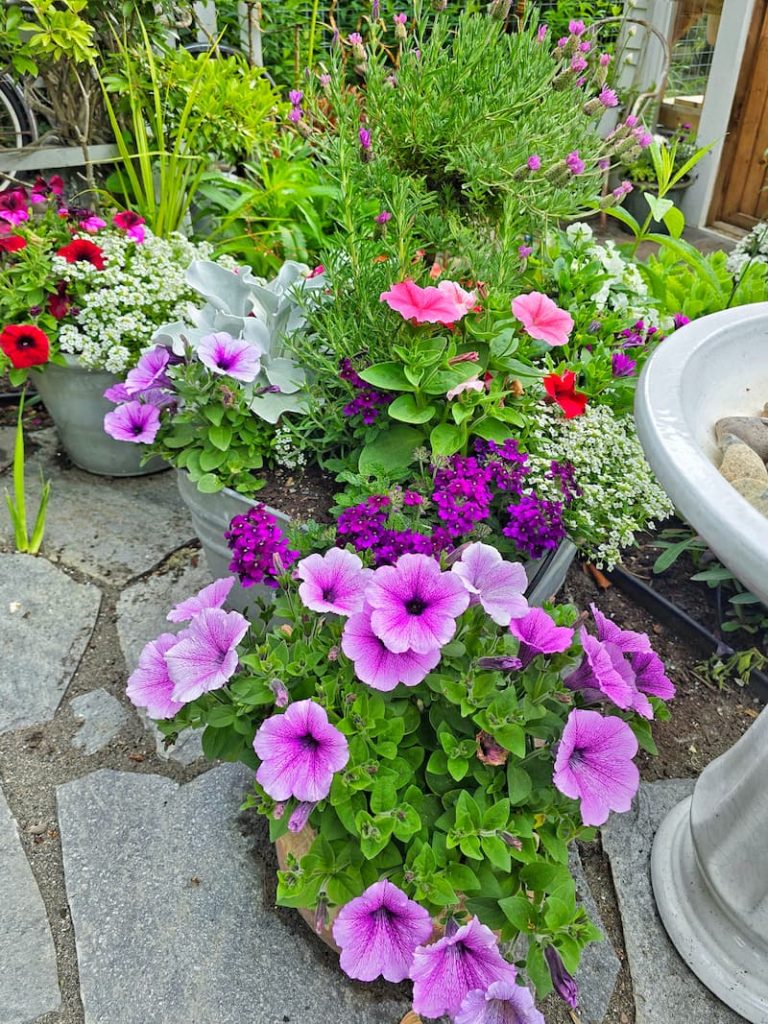
You can identify patterns and detect early signs of pests, diseases, and nutrient deficiencies by consistently adding quick notes and observations about your plant health, weather, and environment. Tracking soil test results and monitoring conditions and amendments ensures optimal growing conditions and prevents problems related to poor soil health.
This proactive approach allows you to take preventive measures before problems escalate.
Improve Garden Planning
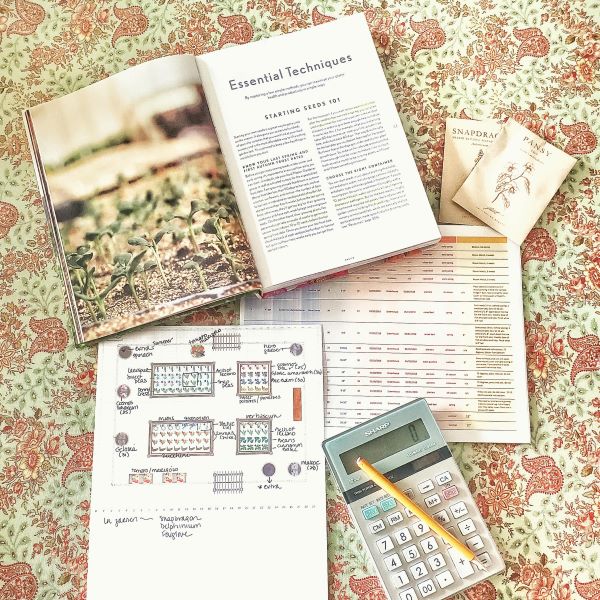
The level of organization that comes with faithfully using a gardening journal will help you stay on top of your gardening chores and make the most of your growing season.
With documentation from previous years, it’s easier to develop new ideas and create updated garden plans more effectively. Create to-do lists, set reminders for future plantings, and organize your garden layout with more confidence.
Create a Memory
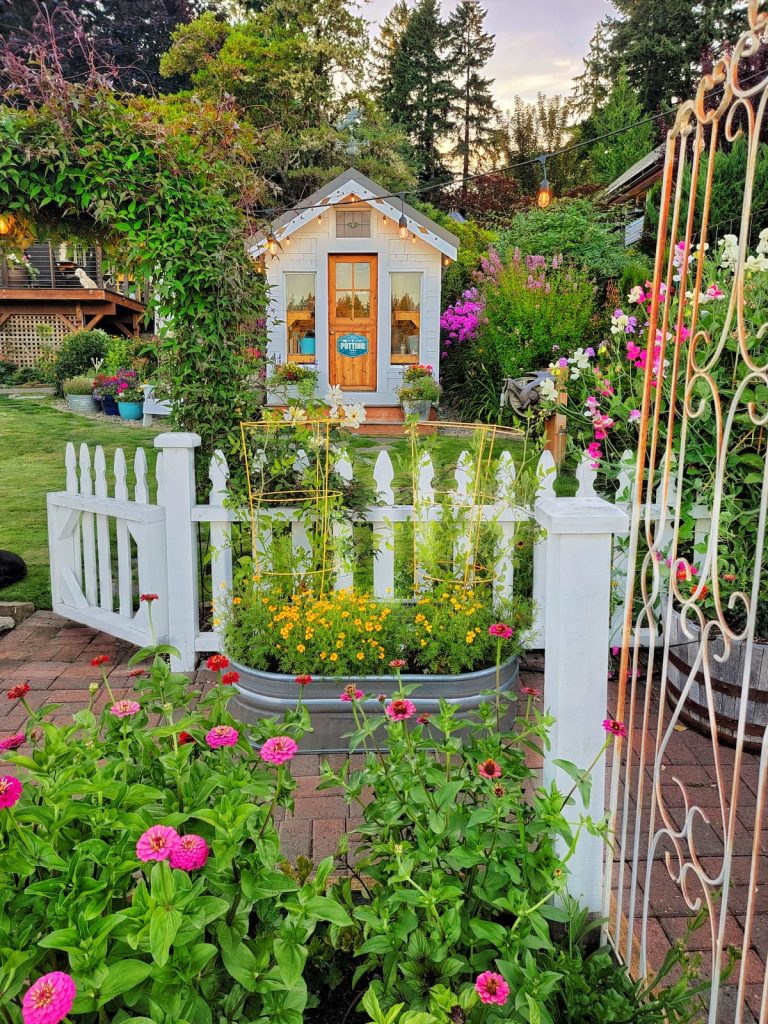
You can include sketches, photographs, and notes about new ideas and inspirations for your garden. This creative outlet can enhance your enjoyment of gardening and motivate you to try new techniques and plants.
Garden journaling helps you create and preserve memories by documenting progress, capturing visuals, recording personal reflections, tracking seasonal changes, sharing stories, and celebrating special moments.
Types of Gardening Journals
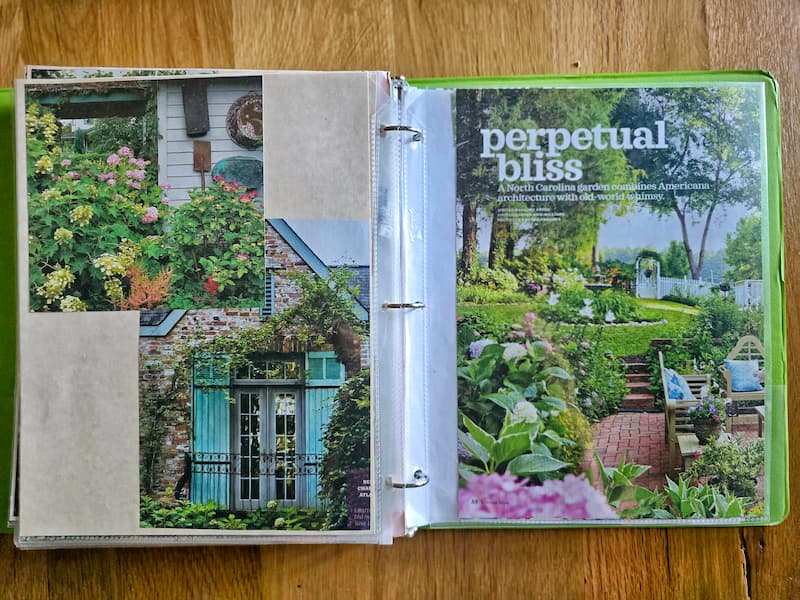
Selecting the right type of gardening journal depends on your preferences, goals, and style. Consider factors like ease of use, portability, and the kind of information you want to track.
Whether you choose a traditional notebook, a digital app, or a combination of formats, the key is to find a journal that helps you stay organized, motivated, and inspired in your gardening efforts.
Here are some common types of gardening journals:
Traditional Notebook Journal
A traditional notebook journal is a simple and versatile option for handwritten notes, sketches, and observations. You can customize it to your needs, adding sections for different types of information.
Spiral Notebook
A spiral notebook is a practical choice for a garden journal because it’s easy to use, portable, flexible, durable, and cost-effective.
Because it maintains chronological order, a spiral notebook is ideal for capturing your gardening experiences. Whether you’re documenting the first sprout of the season or reflecting on the harvest of your favorite annual plants, a spiral notebook helps you create a detailed and personalized record of your gardening journey.
Three-Ring Binder
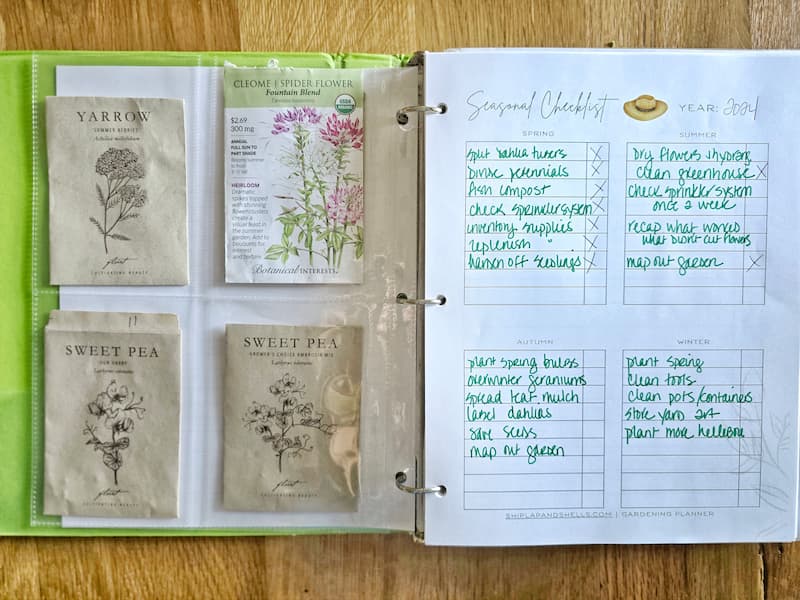
A three-ring binder is one of my favorite options for garden planning, and I use it for my garden diary.
In addition to the garden notes you keep track of, you can store extras such as empty seed packets and plant tags. This information is especially useful for a beginner gardener who is learning and needs all the documentation they can save in one place once the season ends.
Pre-Formatted Gardening Journal
Pre-formatted gardening journals come with specific sections designed to guide your entries. These journals often include pages for planting schedules, weather logs, pest and disease tracking, and harvest records. They are helpful for beginners who want more structure when garden journaling.
Digital Journal
Digital gardening journals are available as apps or software for smartphones, tablets, and computers.
These journals offer features like automatic weather updates, photo uploads, and searchable entries. They are convenient for those who prefer typing and want easy access to their journal on multiple devices.
Bullet Journal
A bullet journal is a highly customizable option. It uses a dot grid format that allows you to create layouts for tracking various garden elements.
Bullet journaling is ideal for those who want functionality and creativity. It allows you to include calendars, to-do lists, plant profiles, and habit trackers in a creative and organized way.
Photo Journal
A photo journal focuses on visual documentation of your garden. You can use a physical photo album or a digital platform to collect images of your plants, garden layouts, and progress over time.
Adding brief notes or captions to the photos can provide context and help you remember key details.
Gardening Journal Printable
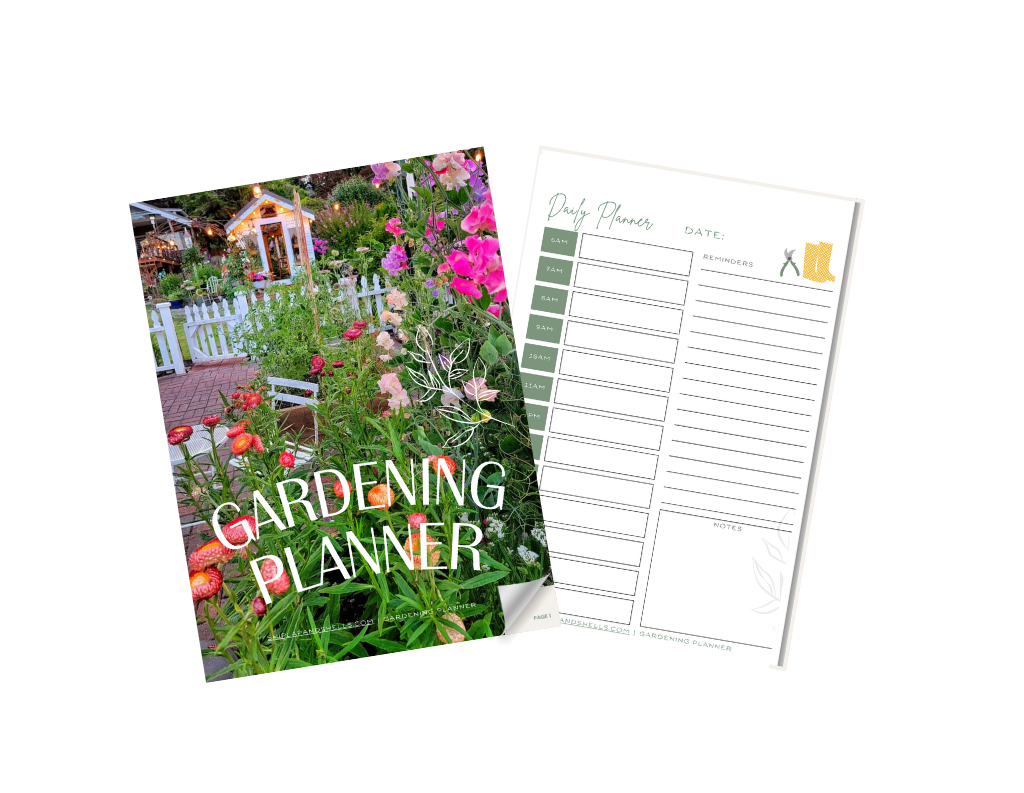
Utilizing a printable gardening journal as a digital product is a great way to streamline your gardening documentation and organization. These printables, available for purchase online, come pre-formatted with dedicated sections for various aspects of garden journaling, such as checklists, planting schedules, weather logs, plant supplies and seed inventory, pest and disease tracking, and more.
Using a digital product, you can easily print out the pages you need, customize them for your specific needs, and arrange them in a binder or notebook.
You don’t have to design layouts or consider what information to include. These printables are created to cover all essential gardening aspects. Digital products often come with beautiful designs and illustrations that can make journaling more enjoyable and visually appealing.
Another advantage is the ability to reprint pages as needed. You can print a new page without hassle if you make a mistake or run out of space.
Combination Journal
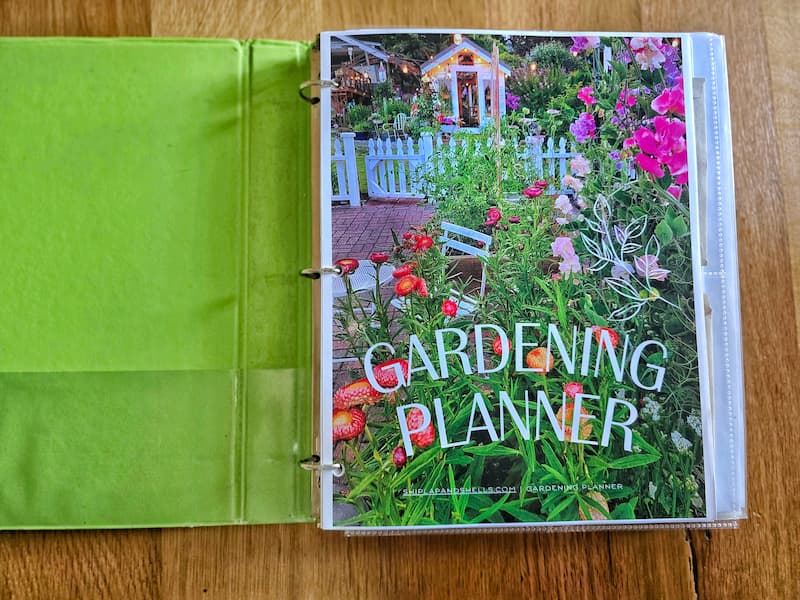
This is my favorite option!!!
A combination journal incorporates elements from various types of journals. I’ll use me as an example.
After printing out my digital garden planner, I hold all my daily notes and plans, empty seed packets, plant labels from new plants, and more in a three-ring binder. I also use a photo journal to record my garden spaces and specific flowers. This system allows me to use different formats for their different strengths.
What to Include in a Gardening Journal
Calendar Pages
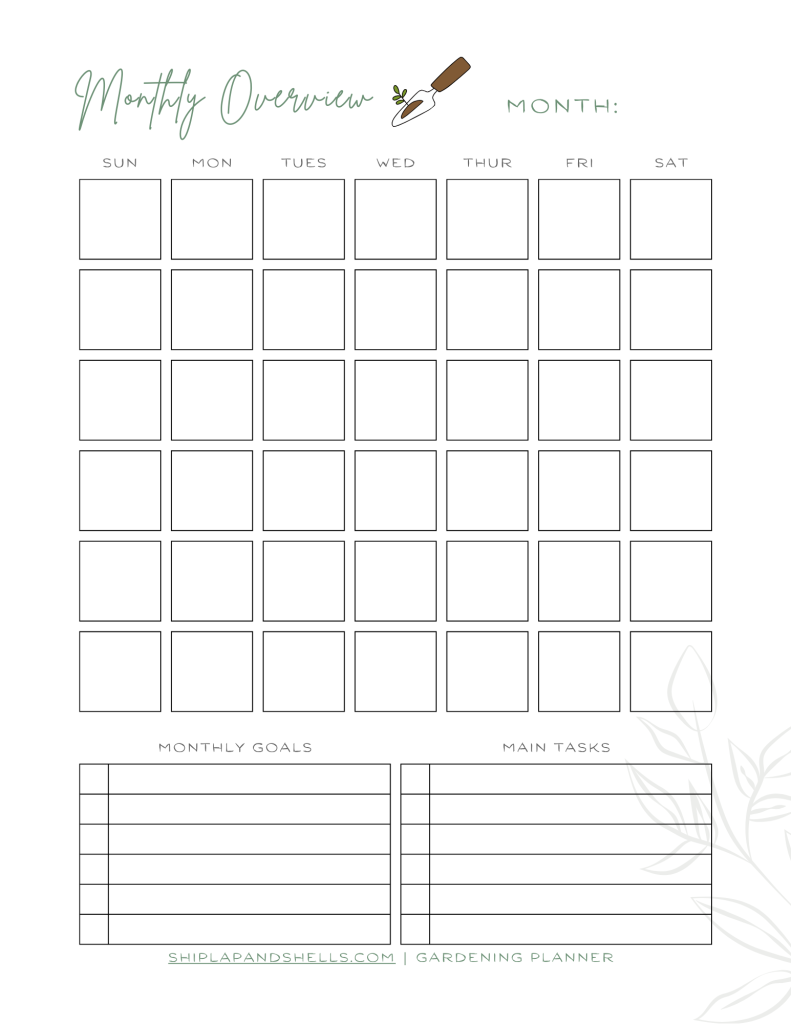
A calendar lets you track important dates, such as planting and harvesting times, watering schedules, fertilizing routines, and pest control measures.
This tool helps you visualize your gardening schedule, making planning and allocating time efficiently easier. You can note the expected bloom times, track the progress of different plants, and record any significant weather events that might affect your garden.
Daily and Weekly Logs and Check Lists
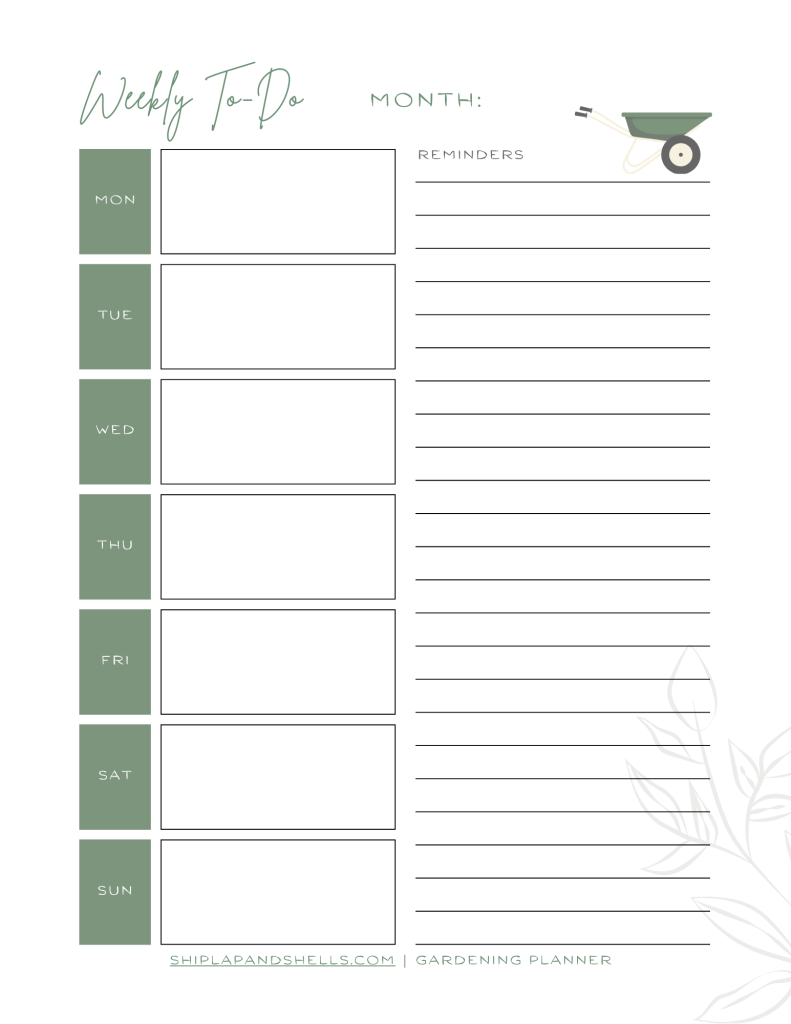
Including daily and weekly logs and checklists in your gardening journal is essential for maintaining an organized and well-managed garden. These logs allow you to record your gardening activities, observations, and tasks regularly, providing a detailed account of your garden’s progress and needs.
Daily Logs
Daily logs help you keep track of your day-to-day gardening activities and observations. In this section, you can note tasks such as watering, weeding, and pruning, along with any significant changes or issues you observe in your plants. Recording weather conditions, such as temperature, rainfall, and humidity, can also be beneficial.
Weekly Logs
Weekly logs offer a broader perspective on your gardening activities and are useful for summarizing the progress and challenges of the week.
You can include a recap of the week’s tasks, notable plant growth, and any pest or disease issues encountered in your weekly logs. This section helps you identify patterns and trends, making planning for the upcoming week easier.
Checklists
These are practical tools for completing all necessary gardening tasks efficiently. You can stay organized and focused by creating checklists for daily, weekly, and seasonal activities.
Daily checklists might include checking for pests, watering specific plants, and deadheading flowers. Weekly checklists can cover more extensive activities such as fertilizing, soil testing, and larger pruning jobs.
Seasonal Logs and Check Lists
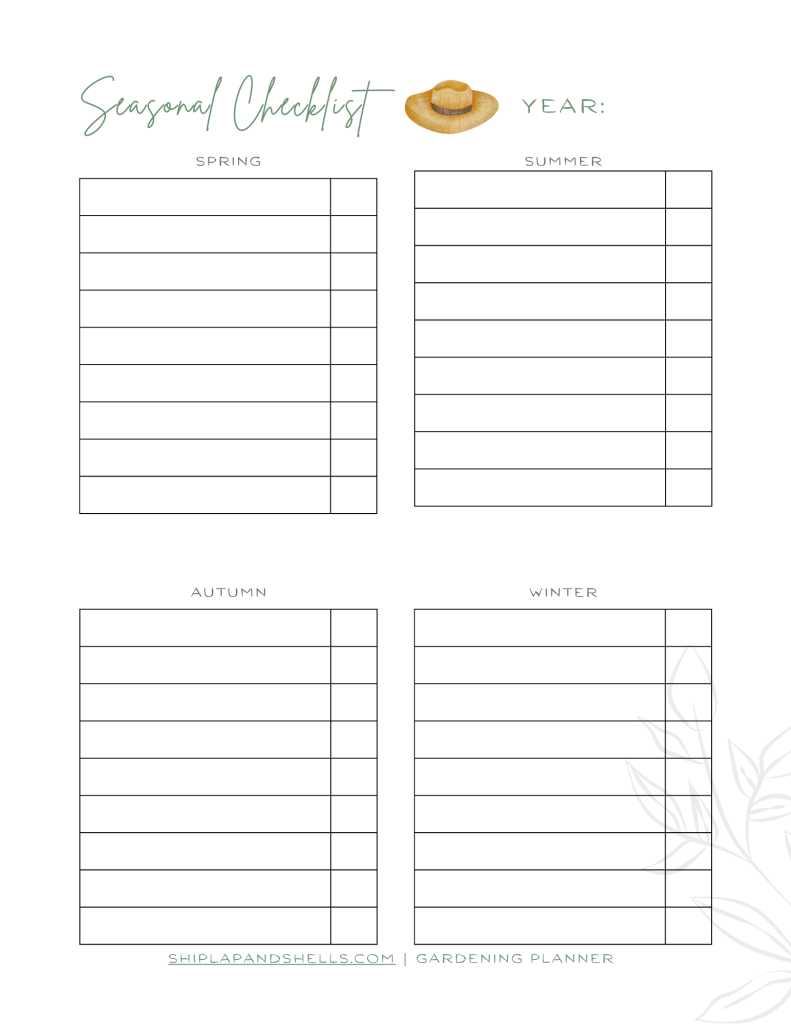
Create checklists detailing tasks that need to be completed for each season, from spring through the winter months. Checklists are useful for scheduling seasonal tasks such as preparing beds in the spring, mulching in the fall, and protecting plants during winter.
Seasonal Log
A seasonal log lets you document your garden’s overarching patterns and milestones relating to the changing seasons. Record the dates of the first and last frost, the onset of particular weather patterns, and the seasonal behavior of different plants.
Noting when certain plants bloom, fruit, or go dormant helps you understand their lifecycle and plan accordingly.
Seasonal Checklists
Seasonal checklists ensure you complete all necessary tasks associated with each season. These checklists help you prepare for the specific demands and opportunities of spring, summer, fall, and winter gardening.
Location Details
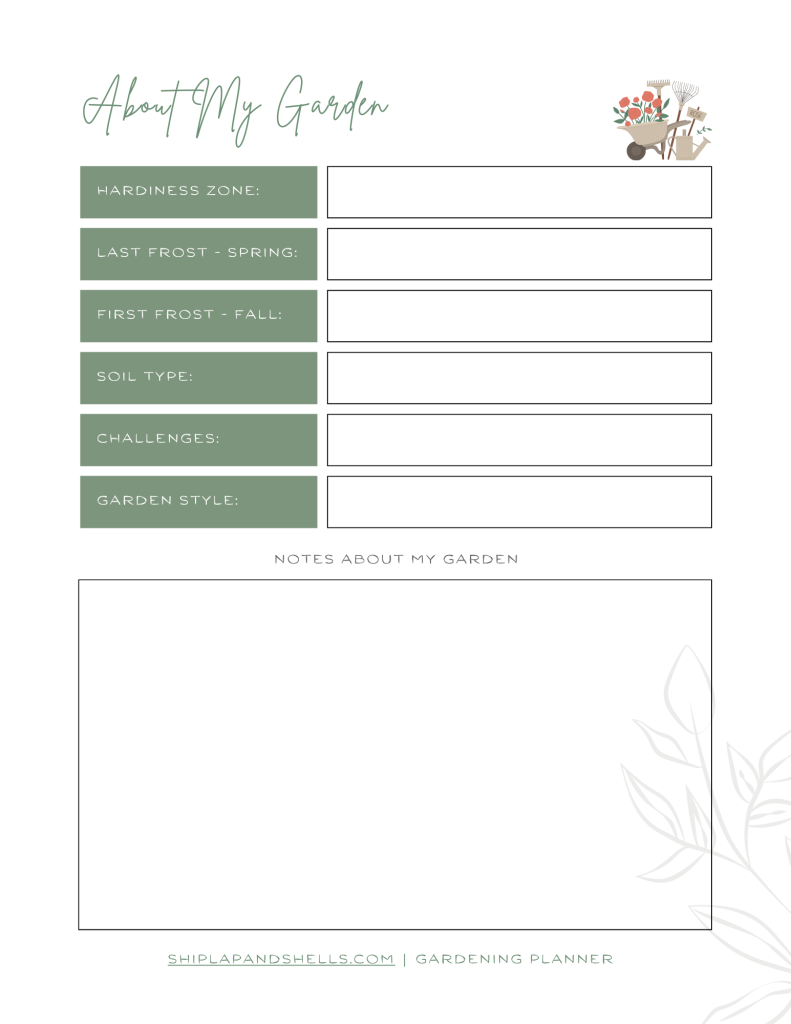
Including location details in your garden journal is essential for understanding and optimizing your gardening practices. Start by noting where you are and specifying your gardening zone. This provides crucial information about the types of plants that will thrive in your area based on temperature and first and last frost dates.
Document climate details such as average temperatures, rainfall patterns, and seasonal changes. These are factors that significantly influence plant growth and health. Recording microclimates within your garden, such as shady spots or areas with more sunlight, helps tailor your planting strategies.
All you need is your zip code to determine your average frost dates.
Seeds & Plant Inventory
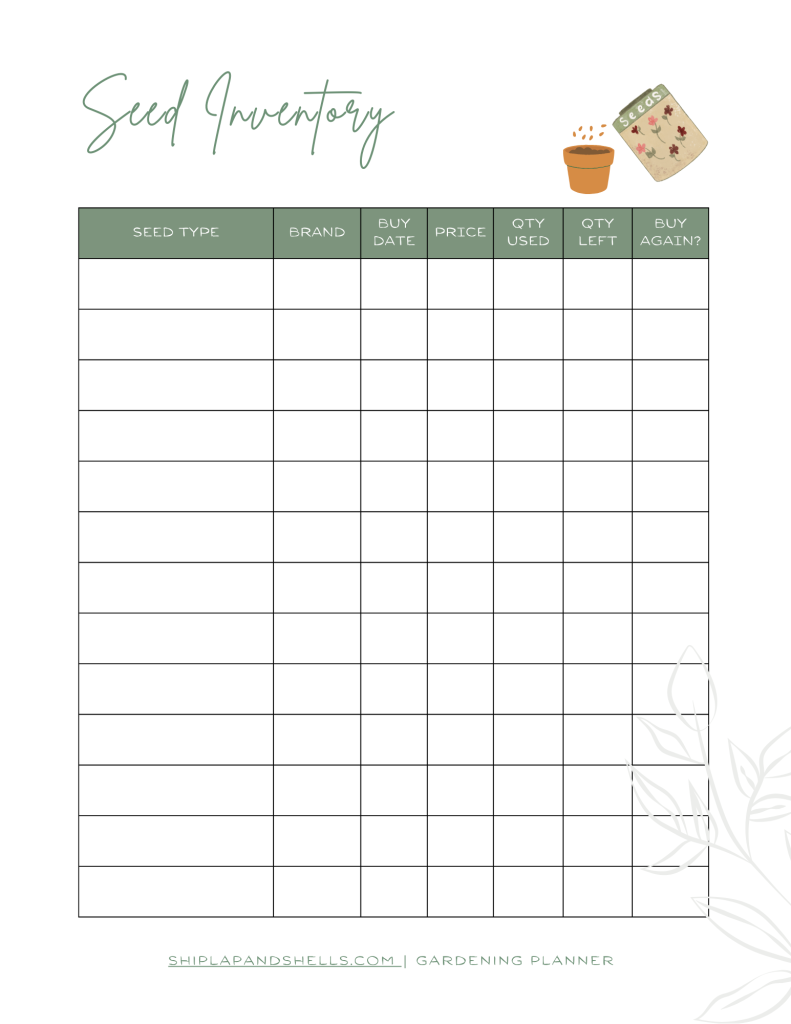
Maintaining a total inventory of everything planted in your garden is essential to journaling. This section should include a comprehensive list of all plants and essential information. Record details such as bloom time, planting time, watering needs, and light requirements to ensure each plant receives optimal care.
This inventory helps you track what’s thriving and what needs more attention, making crop rotation, space management, and overall garden productivity easier.
Plant Profiles
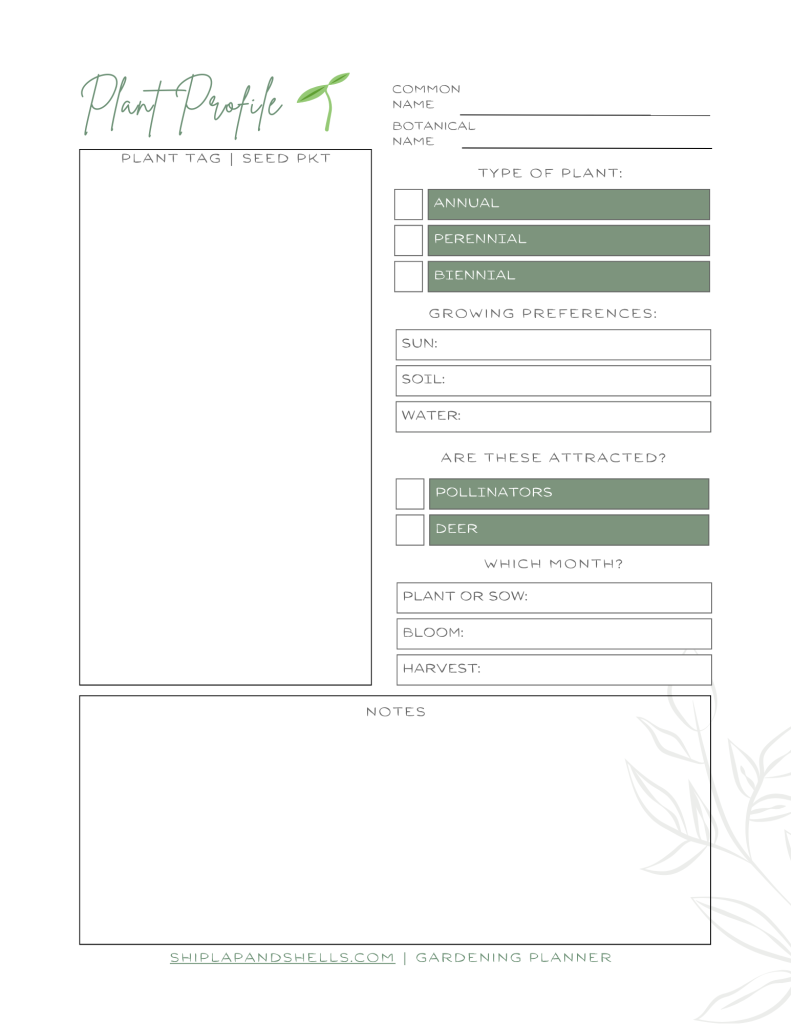
Create detailed profiles for each plant in your garden. Include information about planting dates, care instructions, growth habits, and specific notes about that plant’s performance.
Garden Sketch and Layouts
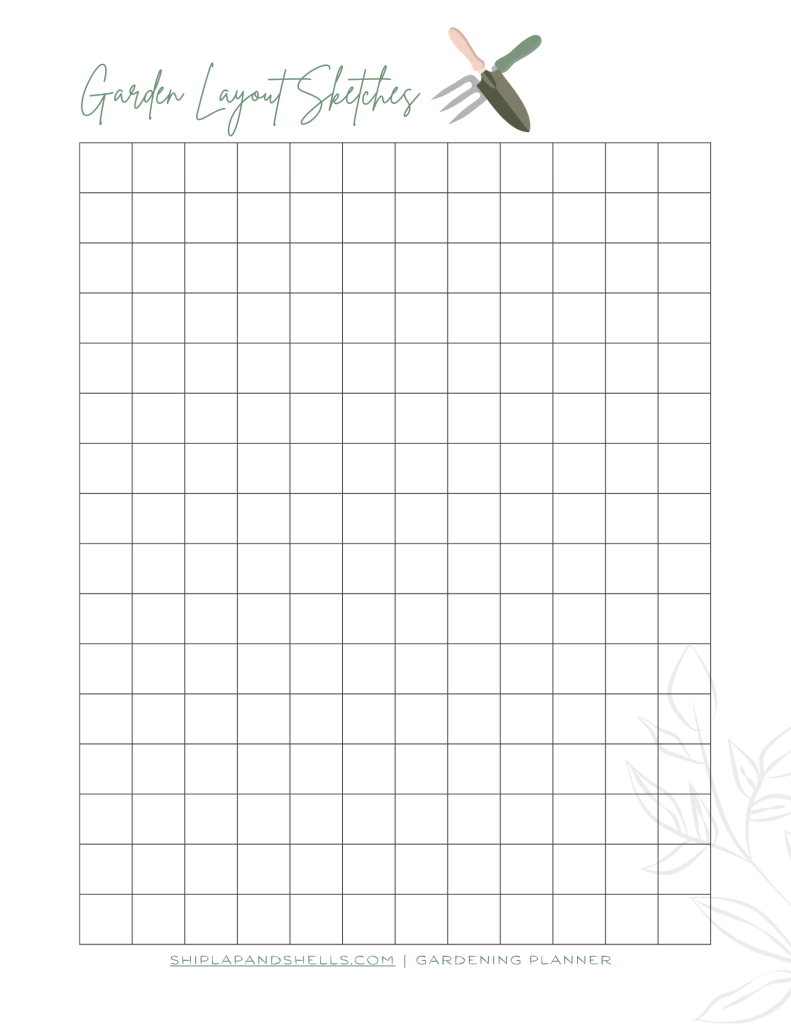
Draw or digitally create layouts of your garden beds. This will help you plan your planting arrangements and track where each plant is located.
Photographs and Sketches
Add visual elements to your journal by including photographs and sketches of your garden. This can help you see the changes over time and capture the beauty of your plants.
Activity Log
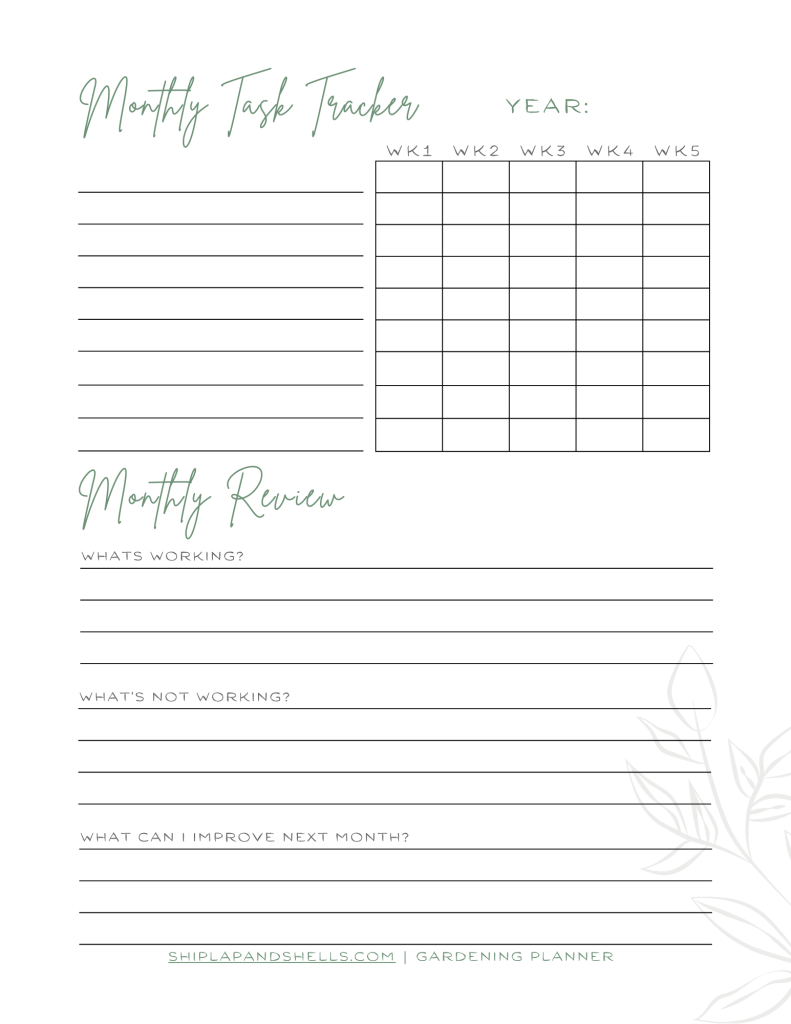
An activity log is a crucial component of your garden journal, capturing all the tasks and amendments you perform in your garden. Depending on your preference, this log can be maintained through various formats, such as a calendar, a written list, or daily entries.
An activity log also allows you to observe the effects of your actions on plant health and garden productivity, making it easier to identify successful strategies and areas needing adjustment.
Expenses & Purchases
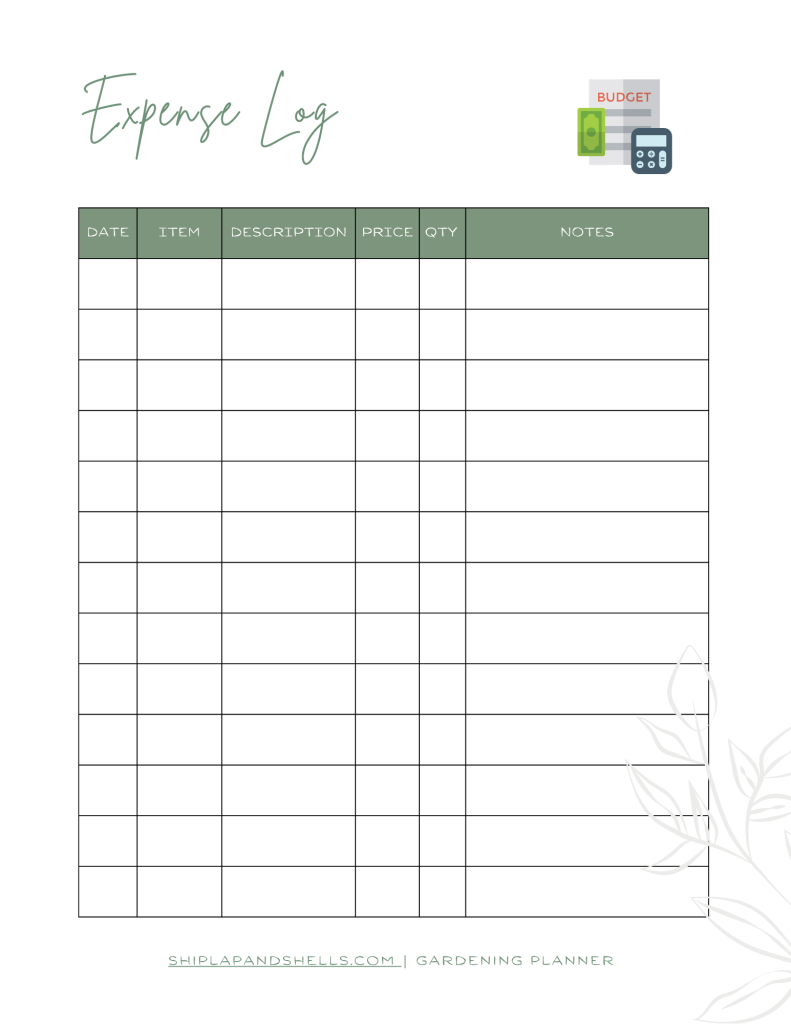
This is a smart way to keep track of the financial aspects of your gardening activities. It lets you record every purchase, from seeds and plants to tools, soil amendments, and garden center receipts.
By keeping detailed expense records, you can monitor your gardening budget more effectively, identify areas where you might save money, and plan future purchases more strategically.
This record also helps you evaluate the return on investment for various plants and gardening techniques, guiding you toward more cost-effective choices.
Garden Maintenance
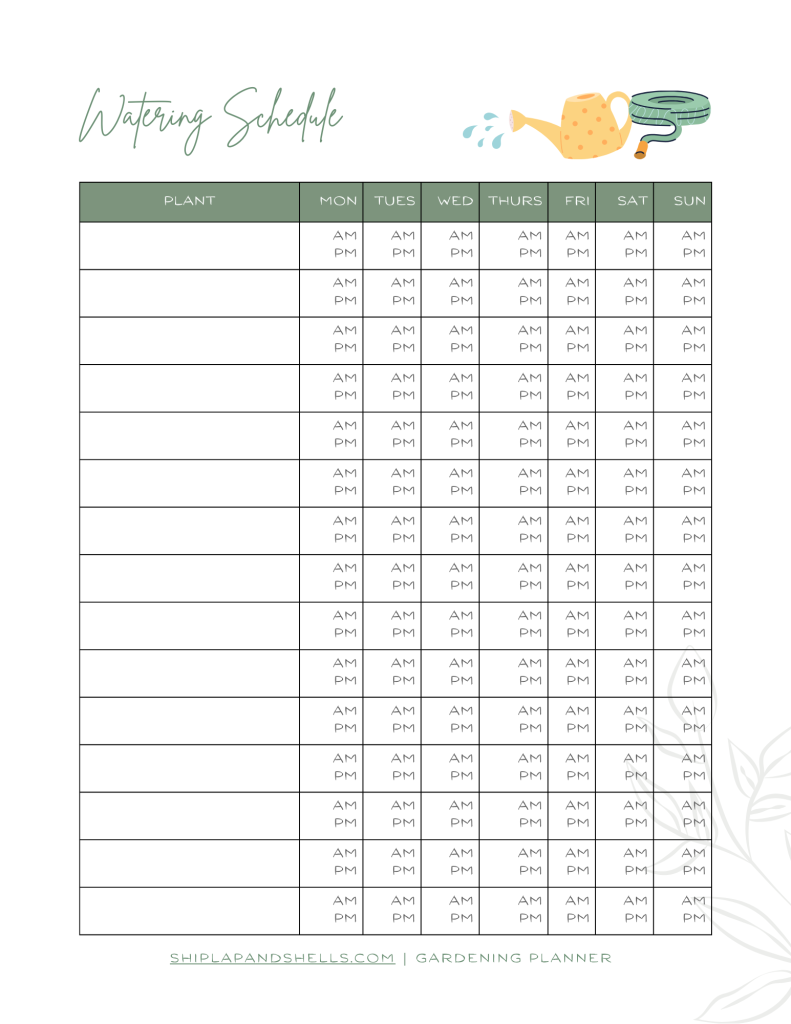
This garden maintenance section should detail all routine care and upkeep tasks, such as watering schedules, weeding, pruning, fertilizing, and pest control.
Seasonal checklists and reminders should be included for tasks like mulching in the fall or preparing beds in the spring. Regularly updating this section helps you stay organized, anticipate upcoming needs, and maintain a healthy, thriving garden year-round.
Weather Details
Including a weather details section in your garden journal is important for understanding how weather patterns affect your garden. This section should document daily or weekly weather conditions such as temperature, precipitation, humidity, and extreme weather events like storms or heat waves.
By tracking these details, you can identify correlations between changing climate and plant health, growth rates, and pest occurrences.
Plant Successes & Failures
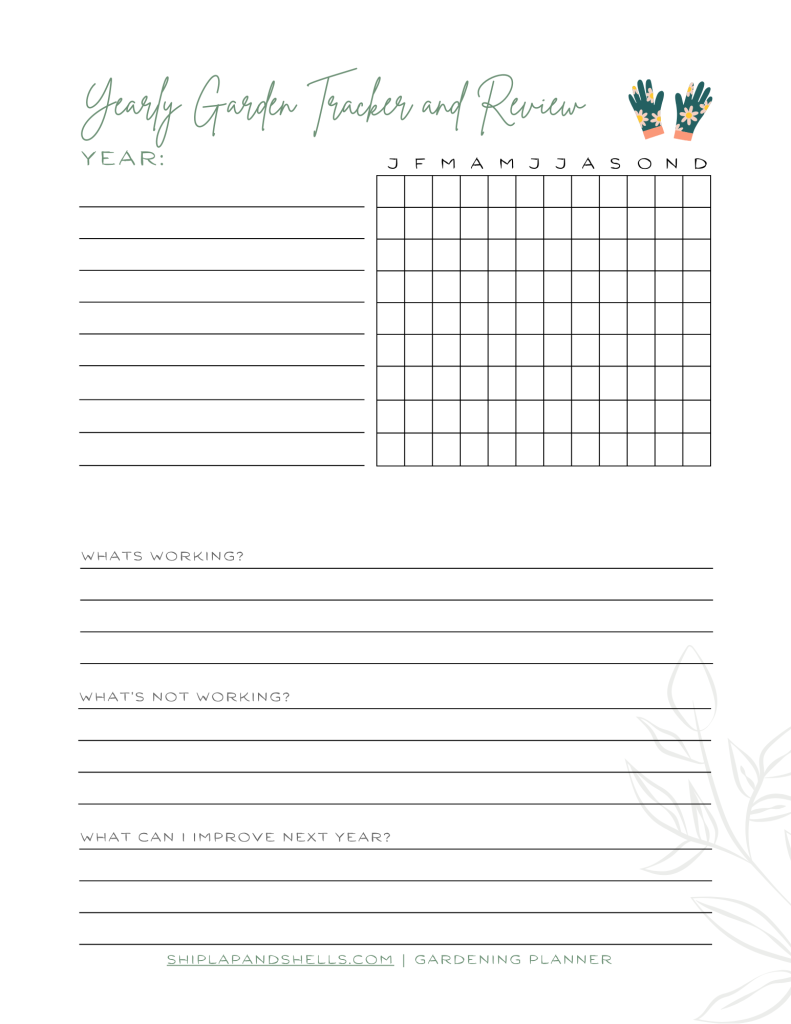
Document which plants thrived and which struggled, noting the conditions, care practices, and specific factors contributing to their outcomes. You can duplicate effective strategies in future seasons by recording successes.
Detailing failures helps you analyze what went wrong—soil issues, pest problems, or unsuitable plant varieties—so you can adjust your methods and avoid repeating mistakes.
Bloom Times
Recording the dates when each plant begins to bloom and when the flowers fade can give you valuable insights into your garden’s flowering cycles. This information helps you plan and coordinate your plantings to ensure a continuous display of blooms throughout the growing season.
This information also helps identify patterns between bloom times and specific weather conditions or care routines. Tracking bloom times helps you anticipate when to perform tasks such as deadheading, fertilizing, or staking.
Plant Pests and Disease Issues
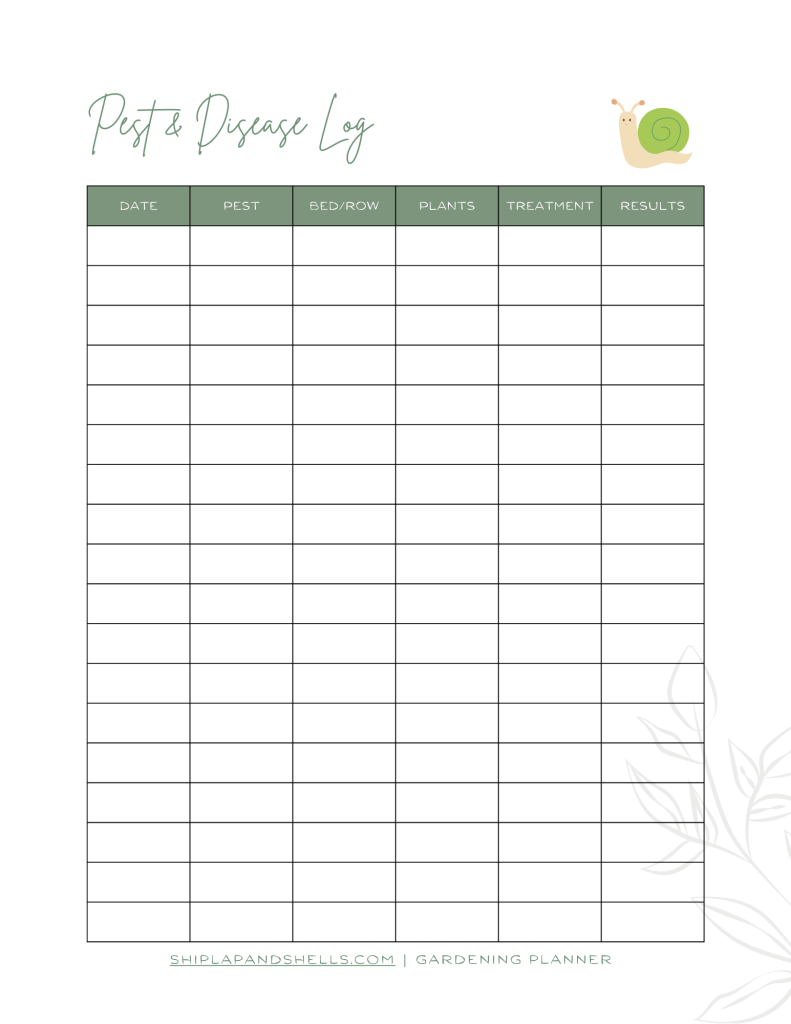
Note any occurrences of pests or diseases, documenting the affected plants, symptoms, and conditions that might have contributed to the problem.
By tracking these issues over time, you can detect patterns, such as particular pests that appear under specific weather conditions or recurring diseases in certain plants.
Garden Memories
This section adds a personal and sentimental area for your gardening records. Capture the special moments and experiences that make your gardening journey unique. You can document memorable events such as the first bloom of the season, the satisfaction of harvesting your first flower, or the joy of discovering a new favorite plant.
Sketches and photos of your garden and pressed flowers can create a reflective record.
Garden Layout Design Ideas
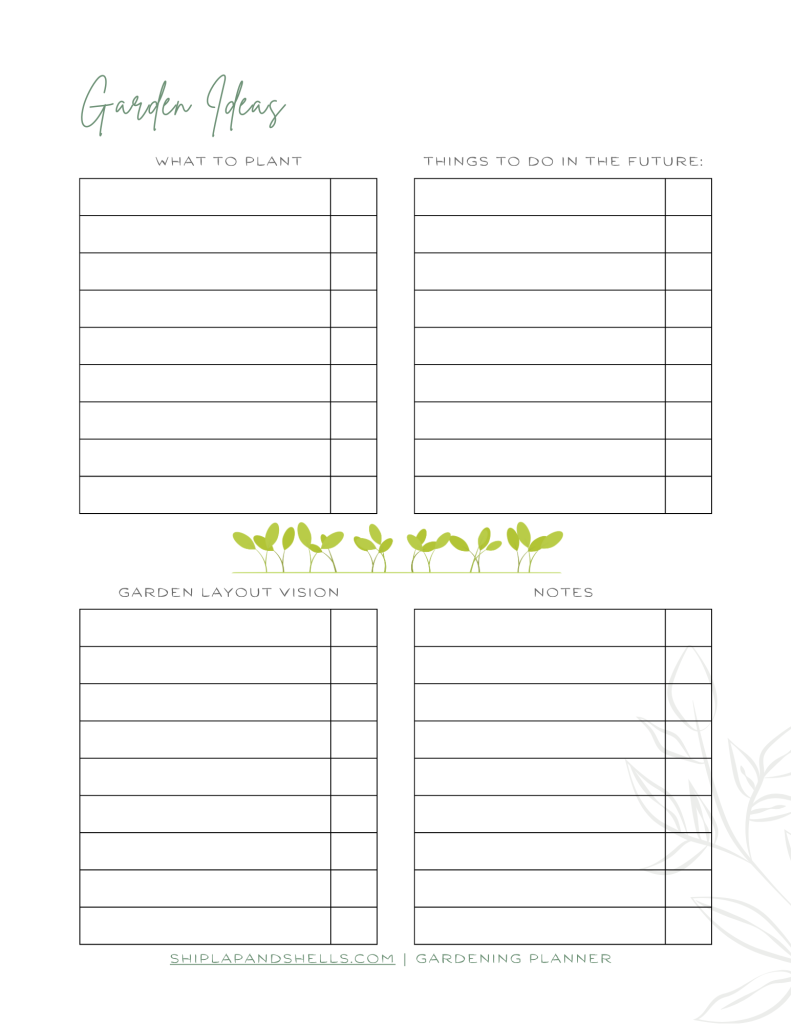
Sketch or map out the arrangement of your garden beds, noting the placement of different plants, pathways, and garden features. By documenting your layout, you can experiment with different designs and optimize space usage.
This section can also include ideas and inspirations for future projects, such as new plant combinations or incorporating decorative elements like trellises and water features.
Shop for Garden Journals and Accessories
How to Start a Garden Journal
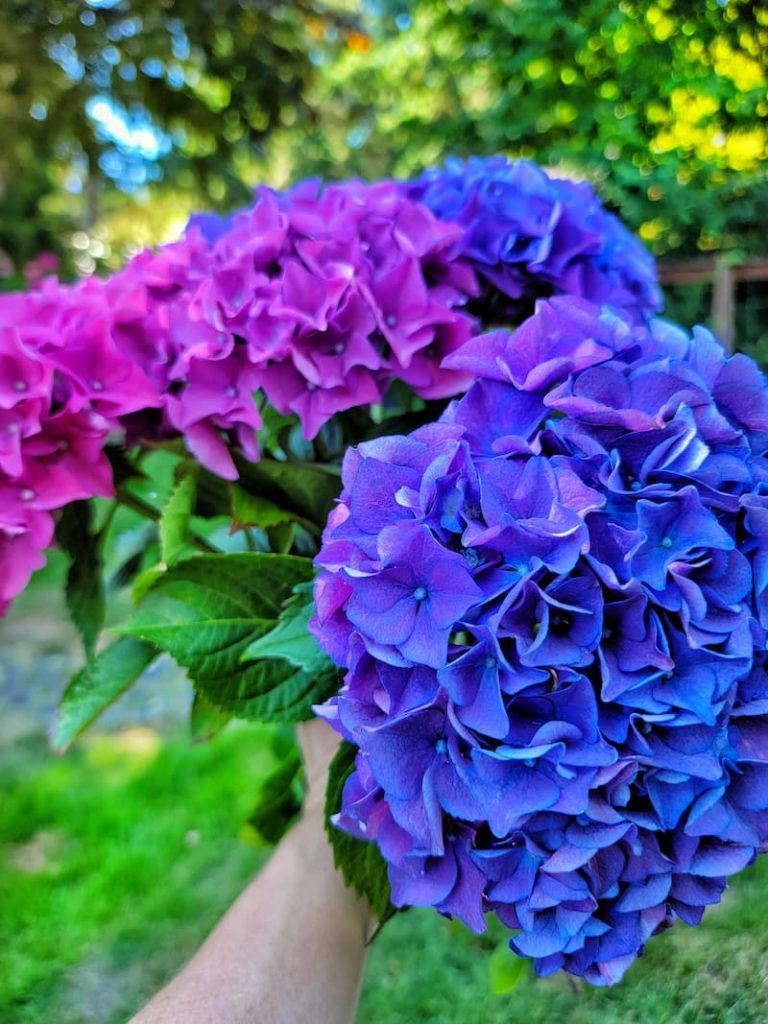
Starting a garden journal is a fun step towards improving your gardening experience. Whether you’re a beginning gardener or a seasoned expert, a well-used garden journal can provide valuable insights and help you achieve greater success.
Here’s a step-by-step guide to help you get started:
Choose Your Journal Format
Decide on the type of journal that fits your style and preferences. Consider the following options:
Gather Your Supplies
Depending on the format you choose, gather the necessary supplies. You’ll need a good-quality journal and writing utensils for a traditional notebook.
Choose an app or software that meets your needs for a digital journal. If you prefer a photo journal, ensure you have a camera or smartphone for taking pictures.
Set Up Your Journal
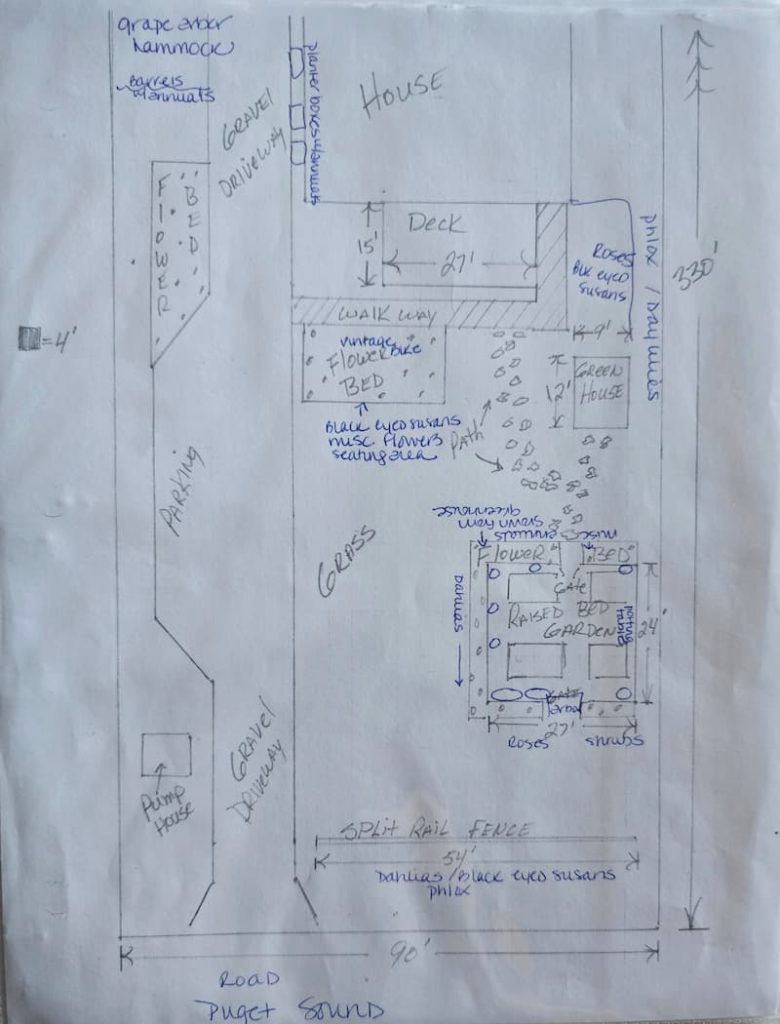
Create sections or pages for different types of information. Here are some ideas:
Start Writing and Recording
Begin by making regular entries in your journal. Include detailed observations, such as:
Add Visual Elements
Incorporate photographs, sketches, and diagrams to document your garden’s progress visually. This can help you see changes over time and capture the beauty of your plants. You can also press and preserve leaves or flowers to add a personal touch.
Review and Reflect
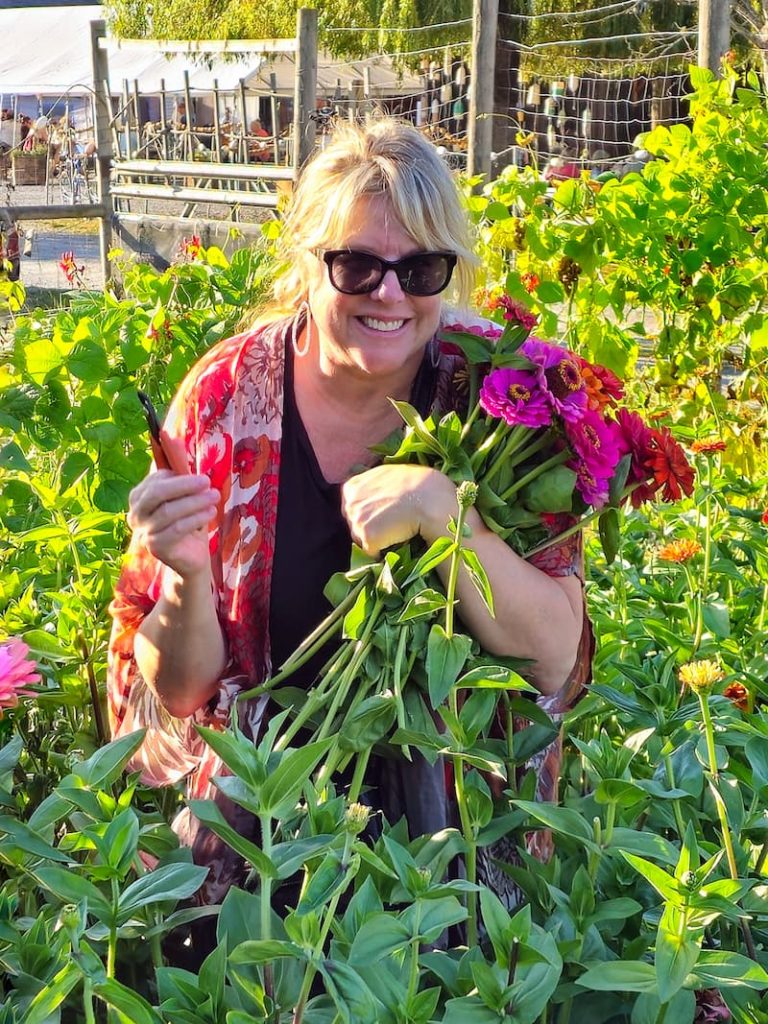
Periodically review your journal entries to identify patterns, successes, and areas for improvement. Reflecting on your experiences can help you learn from mistakes and make better decisions in the future.
Stay Consistent
Make a habit of updating your garden journal regularly. Consistency is key to capturing valuable information and maintaining an accurate record of your gardening activities. Set aside time each day or week to write in your journal and keep it current.
Personalize Your Journal
Customize your journal to reflect your personality and gardening style. Use stickers, washi tape, colored pens, and other decorative elements to make it uniquely yours. A personalized journal can be more enjoyable and motivate you to keep up with your entries.
Garden Supplies and Tools
Check out my favorite garden supplies and tools for the growing season. Whether you’re looking for potting soil or deer repellent, you’ll find what I use in my own garden.
Final Thoughts About Garden Journaling
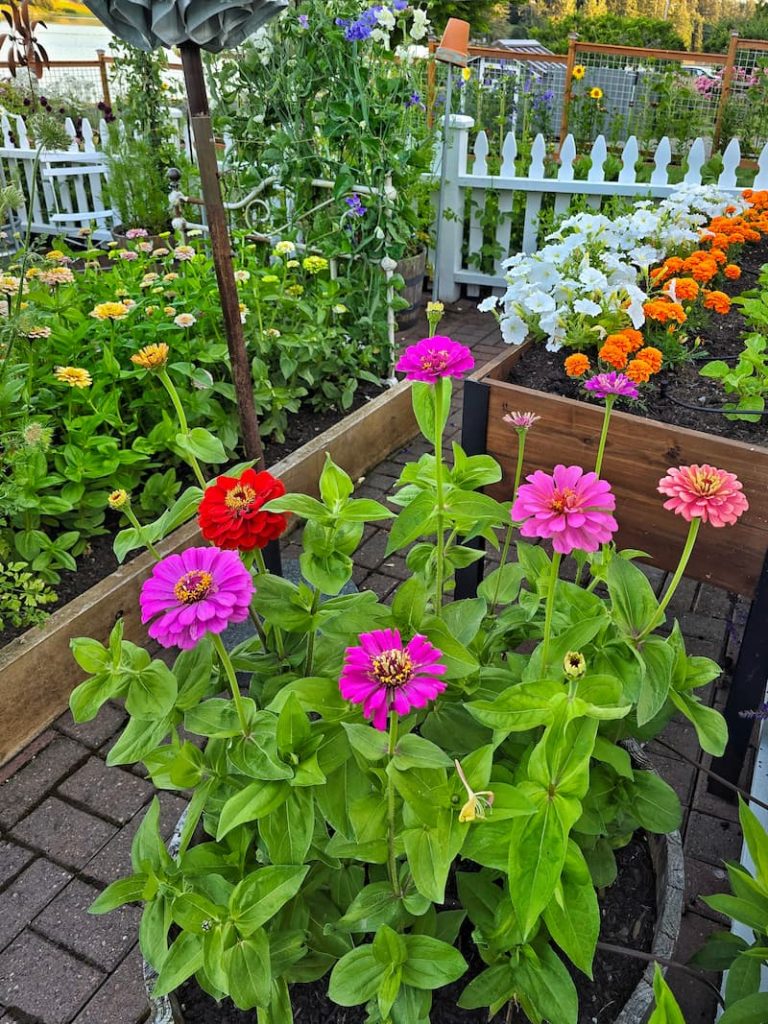
Garden journaling is a powerful system that can transform your gardening experience, helping you become more organized, observant, and successful.
By diligently recording your garden activities, observations, and reflections, you create a valuable resource that guides you through each season, highlights your achievements, and helps you learn from challenges.
Whether you choose a traditional notebook, a digital app, or a combination of formats, the key is to find a journal that fits your style and commit to using it regularly.
If you have any questions or additional suggestions, please share them in the comments below. And be sure to share this blog post link with anyone who may find these gardening tips useful.
Until next time,
Happy Gardening!

I’m a self-taught hobby gardener. Everything I share on my blog is my opinion and what has worked for me.
MORE POSTS
For You To Enjoy
Gardening Made Simple – Your Guide to Beginning Gardening
Follow Me for More Inspiration
Shop my Amazon Storefront, LTK sources, and my favorite home decor, garden, and lifestyle products. When you purchase from one of my links, I earn a small commission, which helps me continue sharing all the content you expect on my blog.
Follow me on Pinterest, Instagram, Facebook, TikTok and LIKEtoKNOW.it. Do you like gardening? Join my Facebook Gardening Tips & Tricks group.

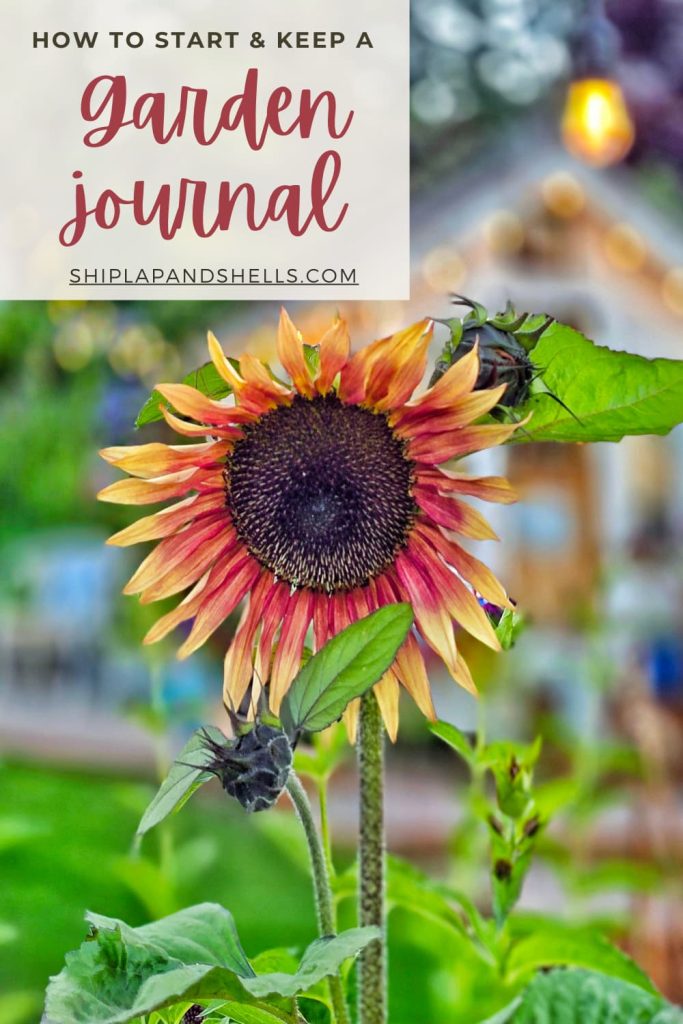


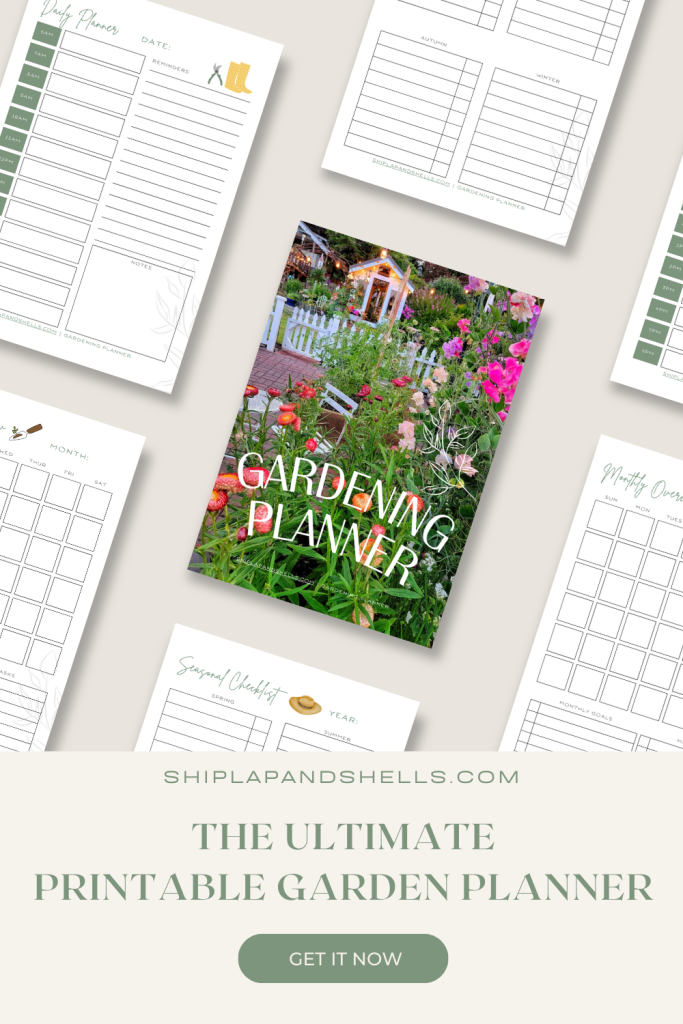
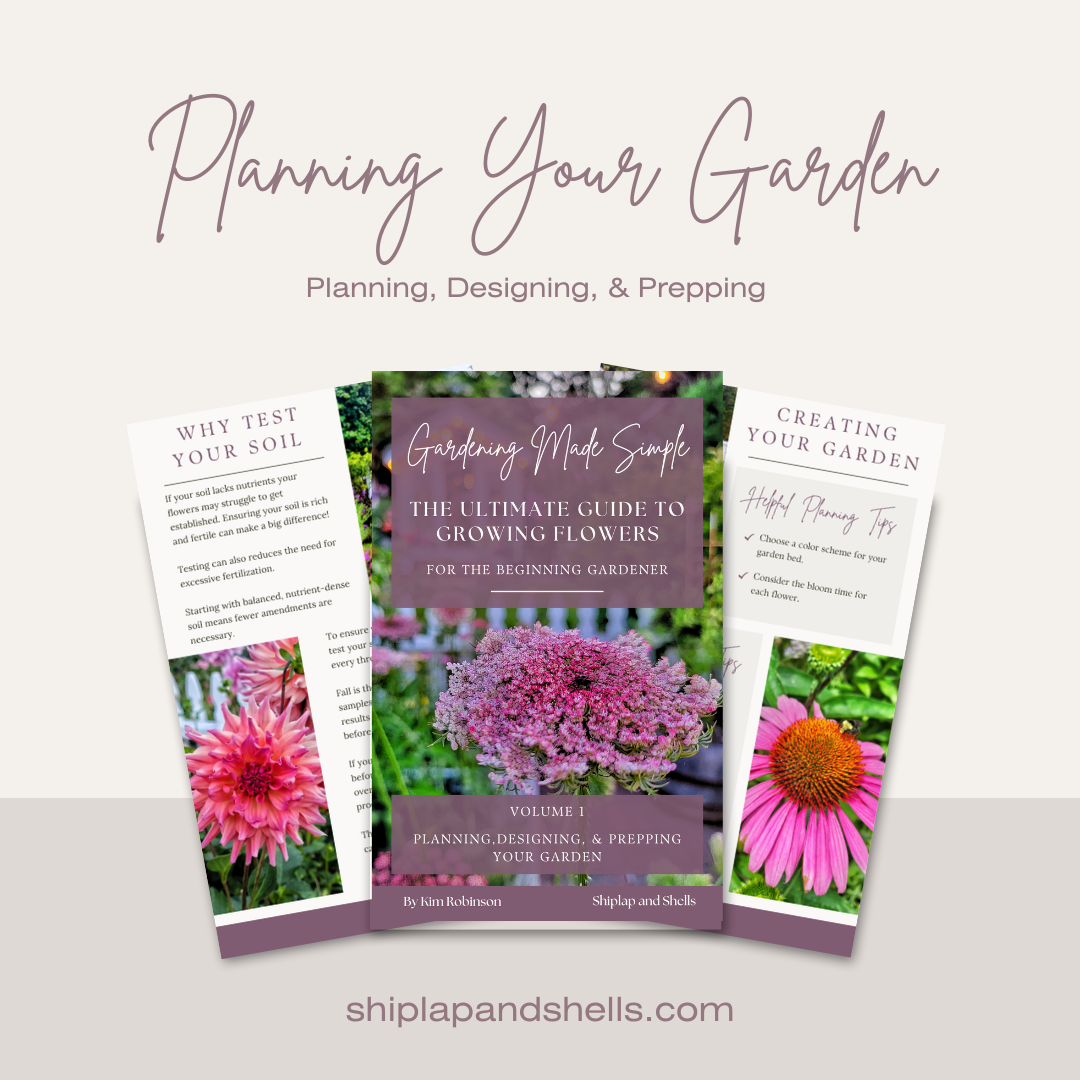
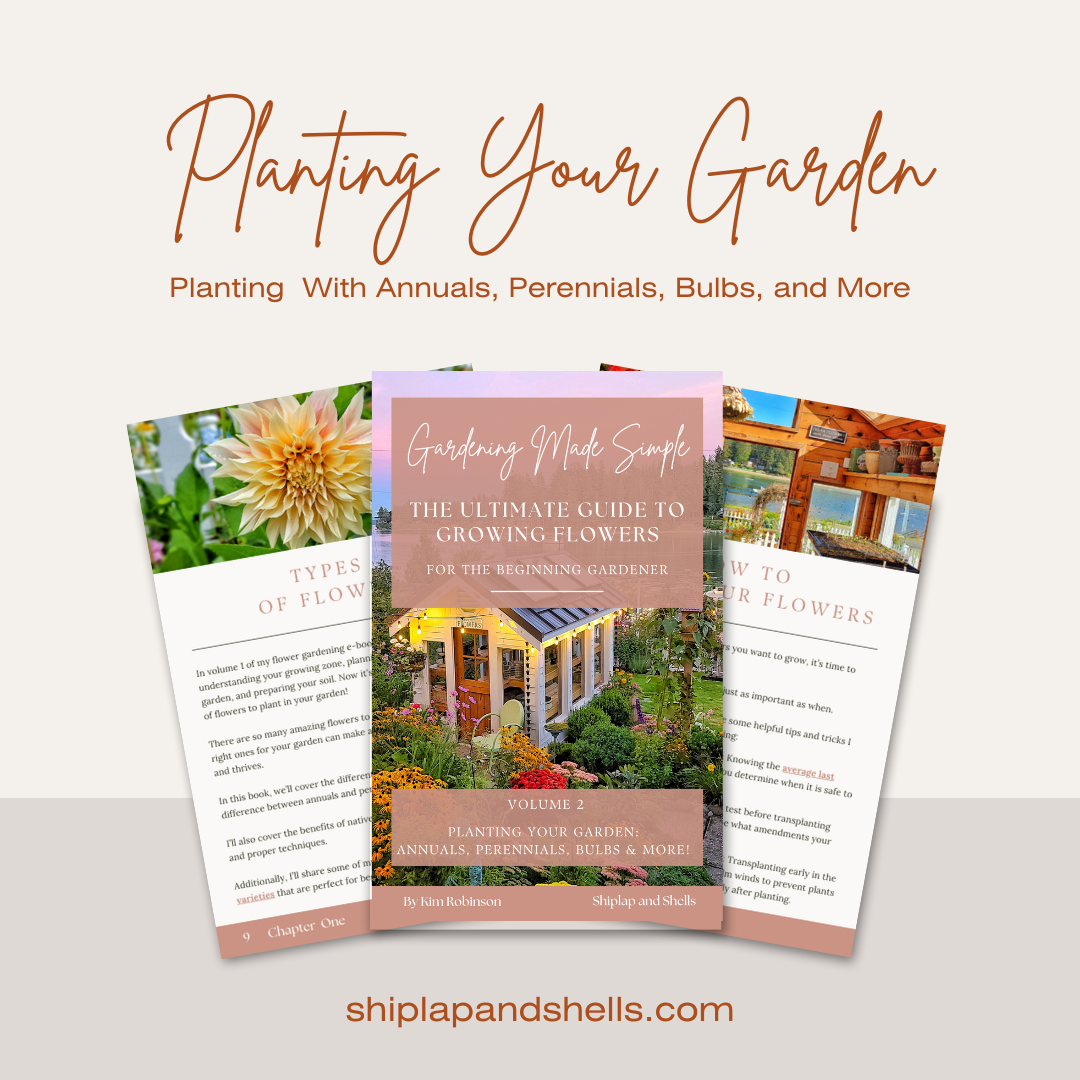
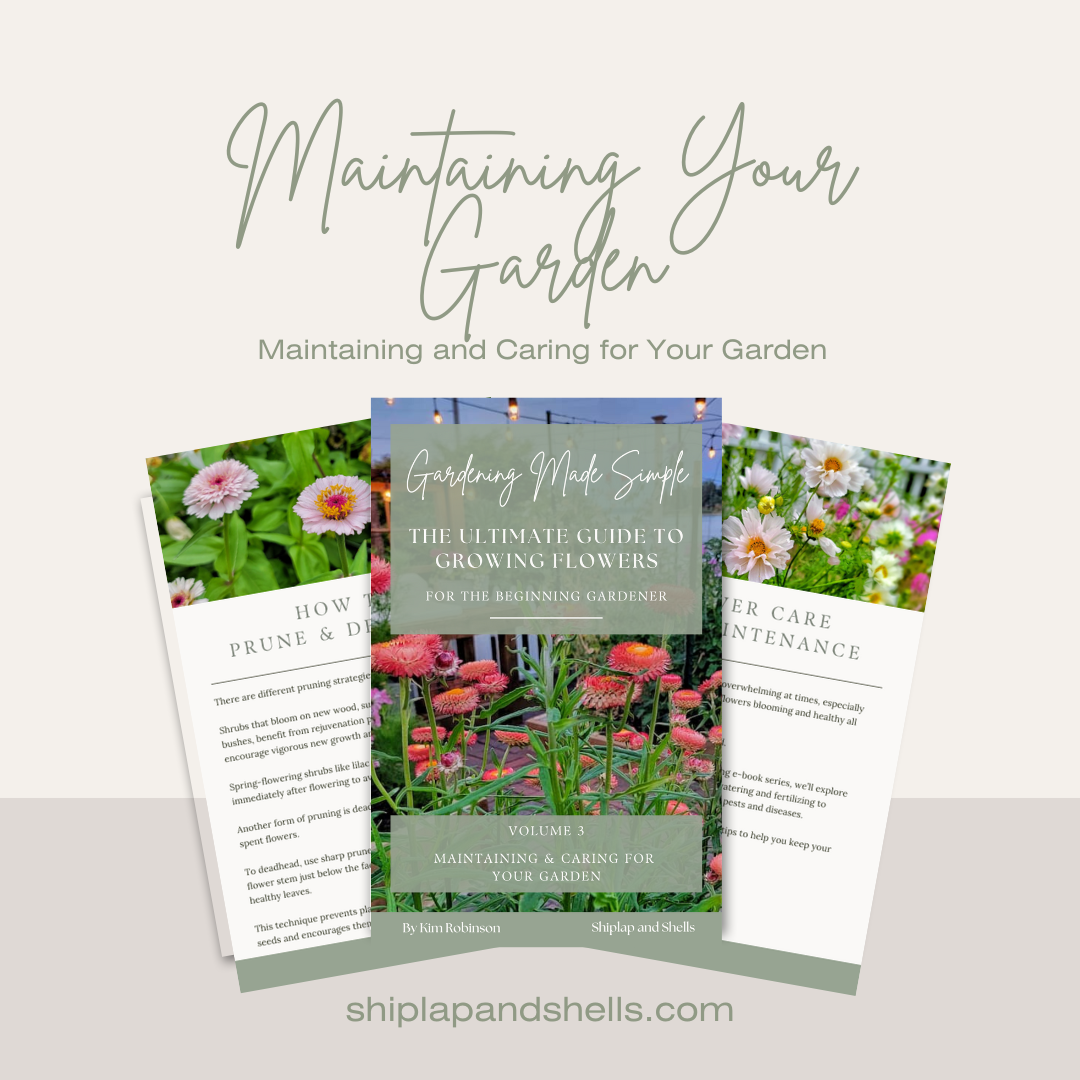
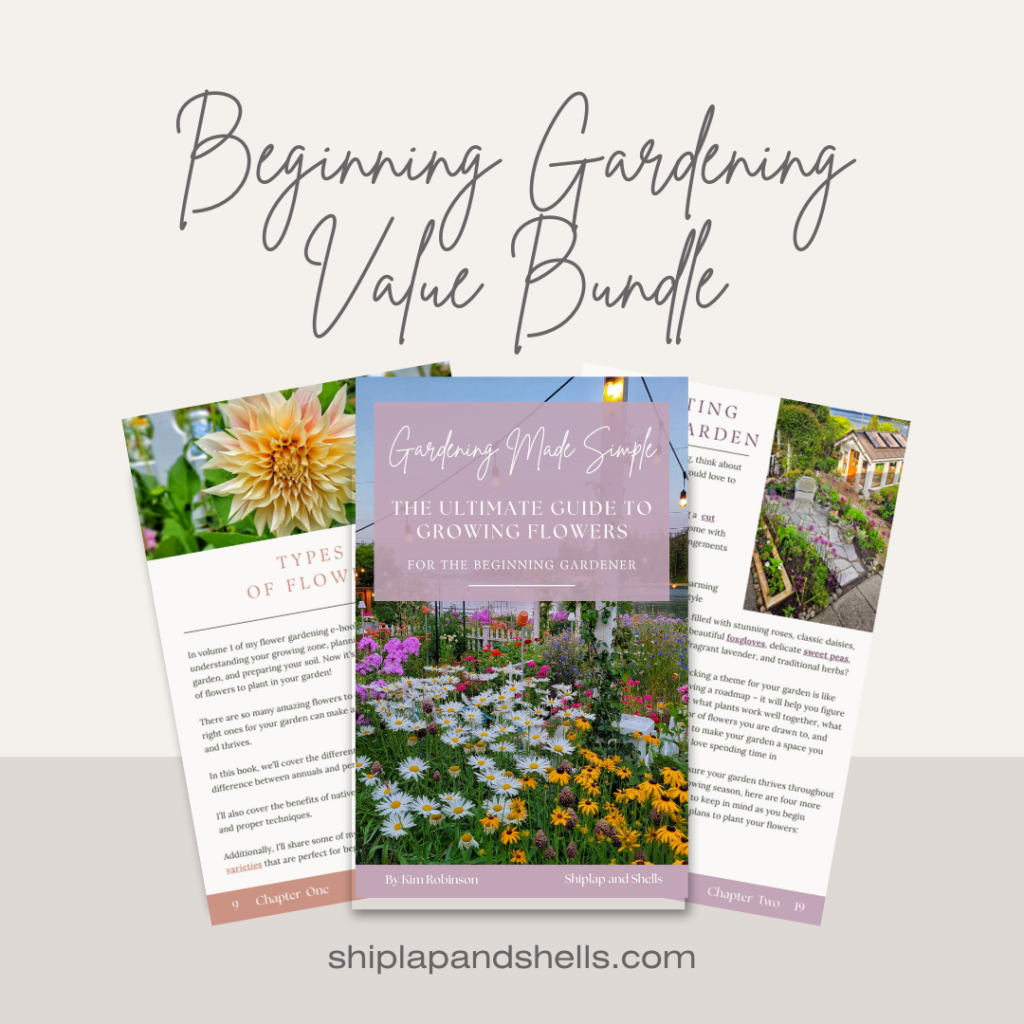
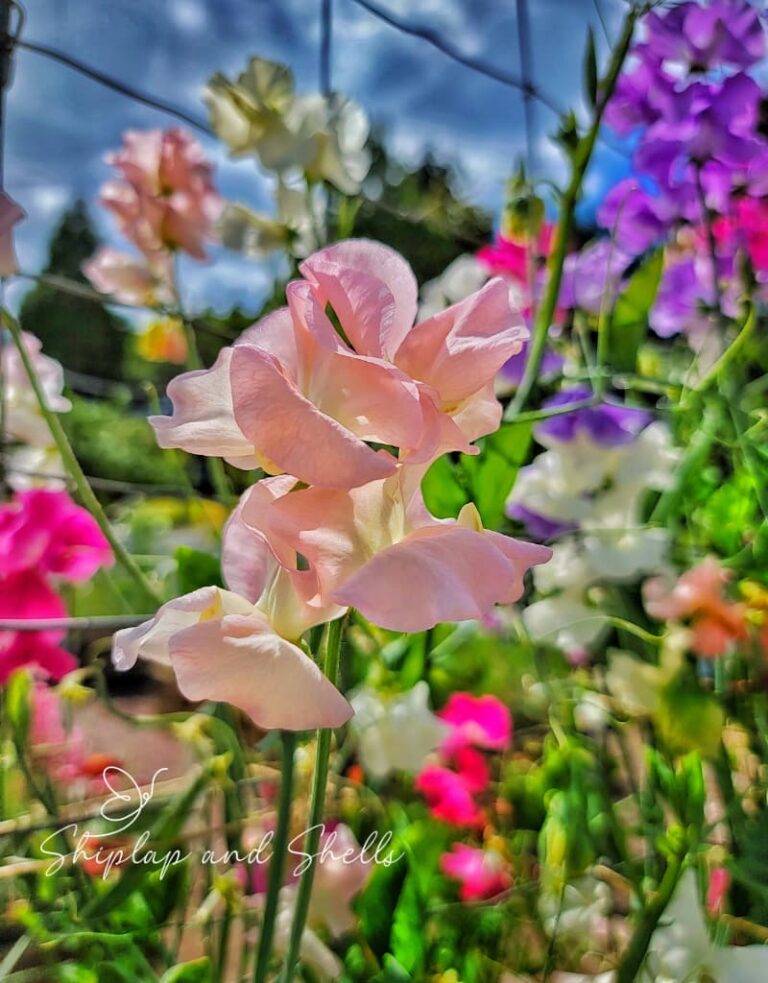

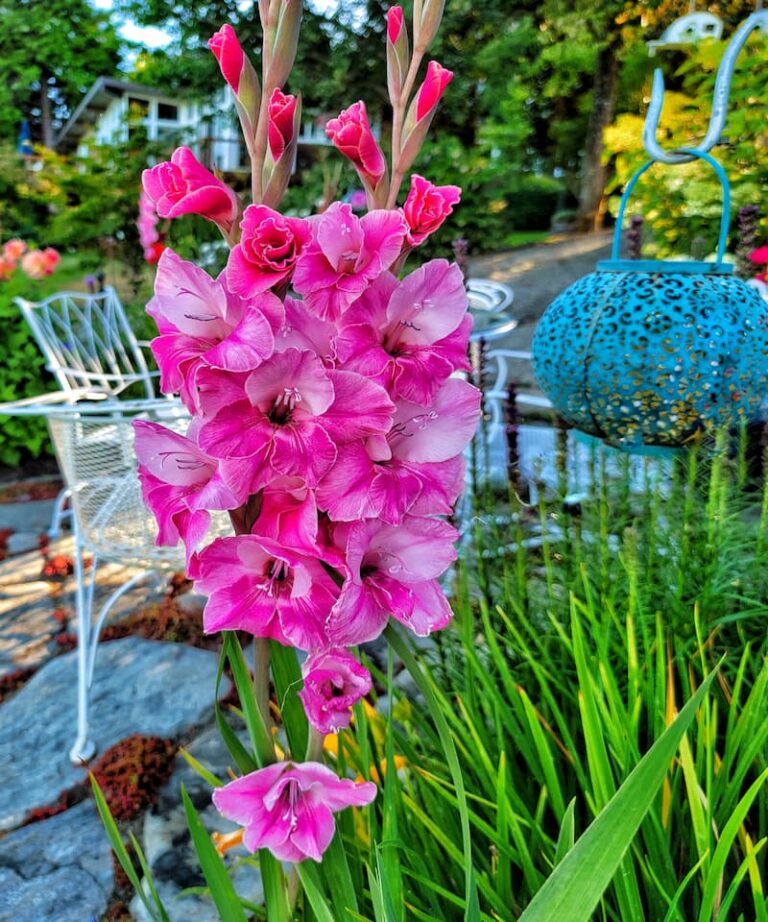
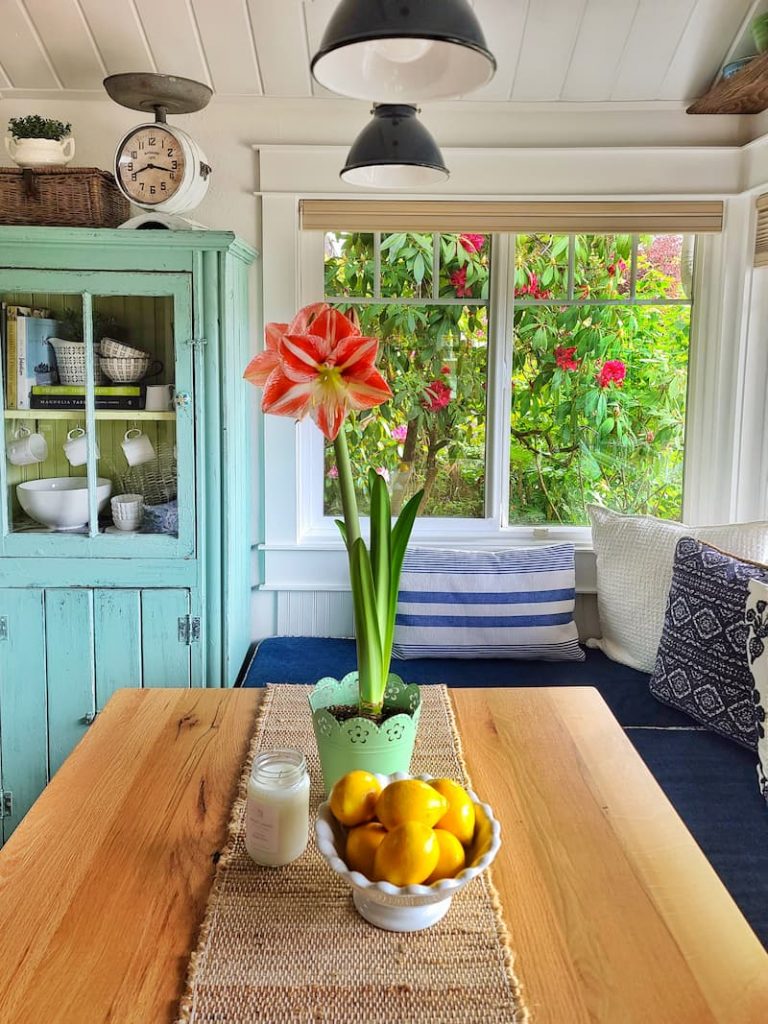
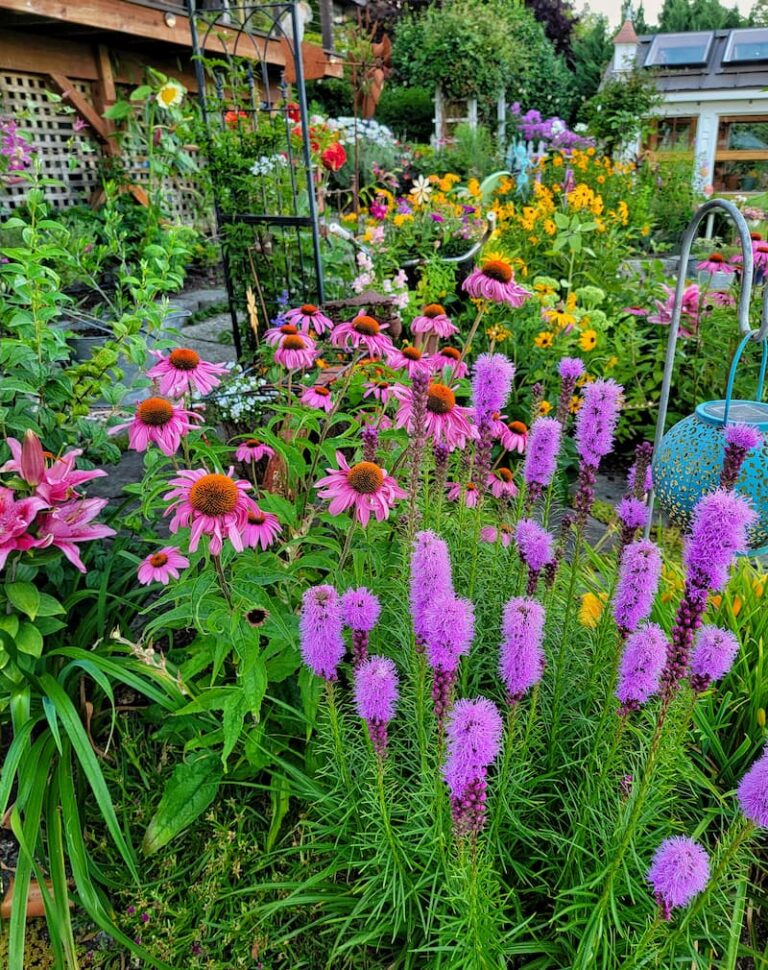

Such a brilliant idea! Starting a gardening journal is a fantastic way to track progress and reflect on your gardening journey!
It really is! I forget things so easily and it’s so nice to look back to see what you did or how a plant performed the year before. Thank you for your comment!
Kim thanks for all the tips you share. I look forward to your post each week.
I have a question about the pulls you mentioned briefly this week.
I have man David’s pulls (white). I find eventually people hey go purple.
I don’t want purple! I want white, they are lovelyi in the dark!!!!
Yes, the butterflies and humming birds like them.
Now to the question.
In the fall, I allow them to stand, not Bull by them out ornpruning.
The birds use what is left during the winter.
I will cut to the ground in April.
By June they are almost 4 ft tall.
By mid July they are 5 ft tall with buds ready to open.
When should I be pruning? To what height?
Ever grateful for your response.
Hi Nan, Thanks so much for your question. I’m not sure which flower you are talking about. Can you confirm so I can answer your question accurately? Thank you my friend.